
|
|
|||||||||||||
|
Ostatnie 10 torrentów
Ostatnie 10 komentarzy
Discord
Wygląd torrentów:
Kategoria:
Muzyka
Gatunek:
Thrash Metal
Ilość torrentów:
32
Opis
...SIŁA I PIĘKNO MUZYKI TKWIĄ W JEJ RÓŻNORODNOŚCI..
..::OPIS::.. Premierę kolejnego albumu Testament ciężko nazwać świętem thrash metalu, bo styl zespołu przez lata tak ewoluował, że najprościej nazwać go po prostu metalem. Album nosi tytuł Para Bellum, jest pierwszym albumem dla Nuclear Blast po podpisaniu kontraktu na kolejne trzy płyty dla wytwórni i miał premierę 10 października 2025 roku. Nim usiadłem do pisania tego tekstu dałem sobie czas na wycieczkę w przeszłość w moje wspomnienia. Miała ona na celu przypomnienie sobie, jaką pozycję zajmowała kapela Petersona przez długie lata mojej przygody z metalem. Doszedłem do wniosku, że od usłyszenia po raz pierwszy The New Order nigdy sobie tego zespołu nie odpuściłem, Testament nigdy nie nagrał St.Anger czy Risk i nie dał fanom powodu do nabijania się z siebie czy odłożenia na półkę. Podczas załamania się popularności thrash metalu w połowie lat 90. band nagrał potężny Demonic, który w moim uznaniu można nazwać odpowiedzią na to co ze sceną zrobiły takie albumy jak Burn My Eyes (Machine Head) czy Demanufacture (Fear Factory). Ruch ten zapewnił zespołowi utrzymanie się na poziomie w czasach najtrudniejszych dla klasycznego metalu i pozwolił nagrać najmocniejsze albumy. Lata 00. przyniosły już delikatny powrót do klasyki i Testament się uchował bez popełnienia wydawniczej wtopy. Późniejsza działalność studyjna mocno skupiła się na łączeniu tego, co najlepsze w klasycznym brzmieniu zespołu, z albumami brutalniejszymi, i tak to wygląda do dziś. Tak samo jest z Para Bellum. Promujący płytę Infanticide A.I nie pozostawił żadnych wątpliwości, że band nie ma zamiaru zwalniać. Założyciele zespołu w postaci Erica Petersona i Chucka Billy’ego pomimo przekroczenia sześćdziesiątego roku życia podtrzymują ogień w swoich żyłach i przekraczają kolejne granice brutalności Testament. Każdy, kto usłyszy otwierający album For the Love of Pain, dojdzie do tego samego wniosku, że „tego to jeszcze nie było”. Peterson pozwolił tu sobie na ukazanie swojej nie ukrywanej miłości do black metalu i po energicznym, groove’owym wstępie uderzył z mocą, jakiej nie mają niektóre zespoły złożone z nastolatków. Wymianki wokalne pomiędzy growlującym Chuckiem i skrzeczącym Erikiem miażdżą. Nie bez znaczenia pozostaje też pozwolenie na pokazanie swych możliwości najnowszemu nabytkowi zespołu w postaci Chrisa Dovasa (Vital Remains, ex-Seven Spires), który zagęścił partie perkusji i je możliwie – względem stylu Testament – zbrutalizował, wciskając blasty i dwie stopy, gdzie tylko mógł. Mocny początek i brutalny wyziew w postaci For the Love of Pain i Infanticide A.I zatrzymuje Shadow People, który rozpoczyna się totalnie, klasycznie testamentowym riffem. Mam uczucie, że słyszałem go co najmniej na pierwszych czterech albumach grupy, ale za to już długo nie było aż tak thrashowo na albumach nowszych. Jest to bardzo dobry utwór, utrzymany w stylu Testament z lat 80. Billy śpiewa z charakterystyczną dla siebie chrypą i poza małym „półblastem” w refrenie utwór ten mógłby pojawić się na przykład na Souls of Black. Z czwórką natomiast pojawia się największe zaskoczenie płyty, ballada. Meant to Be to kompozycja zbudowana na akustycznych gitarach i wokalu Chucka, skojarzenia lecą do The Ritual i hymnu Return to Serenity. Piękna rzecz. Po momencie wyciszenia wlatuje High Noon, który najbardziej kojarzy mi się z albumem The Gathering. Deathowy wokal dominuje na całej długości utworu, a motywy mieszają „deathujący” ciężar z thrashem. Pojawia się tu także bardzo dobre solo, utrzymane trochę w stylu Jamesa Murphy’ego (gitarzysty znanego z Obituary, który grał na Low, Demonic i The Gathering). Kolejny, Witch Hunt nie odpuszcza z tonu, utrzymując duszny klimat. Po tej dwuutworowej dawce brutalności do końca albumu mamy do czynienia z lżejszym obliczem Testament. Billy dużo śpiewa, w riffach pojawia się dużo melodii, trochę heavy metalu, a nawet bluesowego feelingu (Nature of the Beast). Ta twarz Testament jest równie ważna w historii, ale już tak nie szokuje, jak wcześniejsze utwory. Daje solidne, korzenne zakończenie albumu, które będzie uwielbiane głównie przez fanów początku zespołu. Osobiście, początkowo miałem problem z zamykającym całość utworem tytułowym. Para Bellum łączy growlowane zwrotki z bardzo melodyjnym refrenem i jakoś mi się te motywy gryzły. Jednak po kilku odsłuchach ostatecznie się przegryzły i mogę stwierdzić, że lubię jednak całość. Pierwszy odsłuch Para Bellum to był zachwyt. Początek płyty mnie dosłownie zabił, bo nie wierzyłem, że Testament stać jeszcze na taki atak. Późniejsze odsłuchy trochę uśpiły pierwszą podnietę i zacząłem go odbierać jako całość, a nie jako same fajerwerki. To był moment, w którym zacząłem go poznawać, rozumieć jego różnorodność. Przesłuchałem album kilkanaście razy, by mieć pewność co do oceny. Uważam, że Testament nagrał najlepszy album od czasu The Gathering. Ostatnie płyty zawsze trzymały wysoki poziom, posiadały wiele świetnych utworów, ale chyba żaden słuchany w całości nie podobał mi się tak jak Para Bellum. Oczywiście marzy mi się płyta, która w całości brzmiałaby ja Demonic, marzy mi się też taka korzenna, thrashowa i przebojowa jak The New Order, ale od lat dostajemy ich mieszanki, a utrzymanie tych różnych żywiołów w ryzach nie jest łatwe. Czasami miałem wrażenie, że płyty są nierówne. Nowa jest totalnie różnorodna, ale chyba jednocześnie najbardziej spójna. Album utrzymuje bardzo wysoki poziom zespołu i pcha go dalej, udowadniając, że wiek jednak nie ma wpływu na jakość metalu. Albo masz dobre pomysły, albo odcinasz kupony od przeszłości. Testament należy do tych, którzy mają dobre pomysły. Brzeźnicki Ciężko uwierzyć, że od wydania "Titans Of Creation" minęło już pięć lat. Jeszcze trudniej w to, że występ w Kostrzynie na Pol'And'Rocku odbył się rok wcześniej. Już wtedy członkowie zespołu kręcili na liczniku w okolicach sześćdziesiątki, ale nie przeszkodziło im to w zagraniu świetnego, bardzo żywiołowego, prawie 80-minutowego seta. Na scenie wyglądali, jakby byli w pełni wieku produkcyjnego, a nie zbliżali się do emerytury. W studiu na "Titans Of Creation" również wypadli bardzo dobrze, dając kolejny argument osobom twierdzącym, że Testament nie ma w swojej dyskografii słabego albumu. Jedna z najdłuższych przerw studyjnych przyniosła w końcu "Para Bellum" - album udowadniający starym dziadom z Metalliki, Kreatora czy Destruction, że mimo wieku można wciąż grać ciężko, świeżo, brutalnie, kreatywnie i z werwą. Testament "wjechał z buta" krążkiem, który bez problemu powinien podbić tegoroczne zestawienia najlepszych płyt w kategorii rock/metal. Wszystko tutaj pięknie "gra". Album zaczyna się świetnym, wyjątkowo ciężkim i brutalnym "For The Love Of Pain". Pojawia się tu growl, są też blasty. Momentami utwór brzmi jak zagubione ogniwo z czasów "Demonic". Tak ciężko nie było od "The Formation Of Damnation". To otwarcie na poziomie "D.N.R." z "The Gathering", czyli jest po prostu świetnie. Dalej mamy dwa utwory przedpremierowe. "Infanticide A.I." również pędzi w ekspresowym tempie i wcale nie ustępuje ciężarem otwarciu albumu. "Shadow People" dość wyraźnie zwalnia, co daje sporo miejsca na zbudowanie klimatu i rozbudowanie formuły. Dzieje się tu na tyle dużo, że w ogóle nie czuć, iż utwór trwa prawie sześć minut. Trochę większym wyzwaniem dla niektórych może być "Meant To Be" - testamentowa ballada trwająca ponad siedem i pół minuty. Utwór jest w dużej mierze akustyczny, a w kilku miejscach pojawiają się smyczki. Jeśli ktoś lubił wcześniejszą balladową odsłonę zespołu, bez problemu odnajdzie się również tutaj, bo to zwyczajnie bardzo dobra kompozycja. Reszta będzie miała czas na złapanie oddechu, bo dalej jest już tylko szybko i ciężko. "High Noon" czerpie garściami z okresu "Demonic", "Witch Hunt" wraz z otwarciem bije się o miano najcięższego fragmentu wydawnictwa, a "Nature Of The Beast" i "Room 177" mają w sobie sporo przebojowości. Całość w świetny sposób spina klamrą utwór tytułowy, po którego ostatnich dźwiękach pozostaje pewien niedosyt - chciałoby się chociaż jednego lub dwóch utworów więcej. To fenomenalne, biorąc pod uwagę, że "Para Bellum" trwa ponad 50 minut, a czas ten mija w ekspresowym tempie. Zespołowi udało się uniknąć mielizn i stworzyć naprawdę mocny materiał. Słychać, że muzycy są w świetnej formie. Chuck płynnie porusza się pomiędzy śpiewem, krzykiem i growlem - tak dobrze brzmiał ostatnio kilkanaście lat temu. Na gitarach cuda wyprawiają Skolnick z Petersonem. Na płycie pełno jest smaczków, zmian tempa, przejść, solówek. Gitarzystom tempa dotrzymuje Chris Dovas, czyli świeżak w zespole. Perkusja brzmi tu świetnie i dodatkowo podkręca dynamikę. Całość dopełnia Di Giorgio, który na basie ma już ponad dziesięcioletni staż w zespole. Wszystkie te elementy sprawiają, że "Para Bellum" słucha się znakomicie i od razu po końcowych dźwiękach ma się ochotę ponownie wcisnąć "play". To najlepszy i najcięższy album Testamentu od co najmniej kilkunastu lat. Tak dużo elementów deathowych pojawiło się ostatnio 17 lat temu. Wraz z "Dark Roots…" i "The Formation Of Damnation" może bić się o miano najlepszego albumu zespołu nagranego w tym tysiącleciu. Na plus jak zwykle punktuje również kolejna świetna okładka Elirana Kantora. Karol Otkała https://www.youtube.com/watch?v=TzR0Rgj9zH4 ..::TRACK-LIST::.. 1. For the Love of Pain 5:35 2. Infanticide A.I. 3:28 3. Shadow People 5:45 4. Meant to Be 7:33 5. High Noon 3:53 6. Witch Hunt 4:16 7. Nature of the Beast 4:28 8. Room 177 4:18 9. Havana Syndrome 4:40 10. Para Bellum 6:31 ..::OBSADA::.. Chuck Billy - lead vocals Alex Skolnick - lead guitar Eric Peterson - rhythm and lead guitar, backing vocals Steve Di Giorgio - bass Chris Dovas - drums Dave Eggar - string arrangement, orchestration, cello, viola, violin Chuck Palmer - string arrangement Xavi Morató - violin https://www.youtube.com/watch?v=EuYGa2VNEOg SEED 15:00-22:00. POLECAM!!! 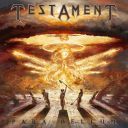
Seedów: 0
Komentarze: 0
Data dodania:
2025-12-21 17:52:18
Rozmiar: 119.76 MB
Peerów: 0
Dodał: Fallen_Angel
Opis
...SIŁA I PIĘKNO MUZYKI TKWIĄ W JEJ RÓŻNORODNOŚCI..
..::OPIS::.. Premierę kolejnego albumu Testament ciężko nazwać świętem thrash metalu, bo styl zespołu przez lata tak ewoluował, że najprościej nazwać go po prostu metalem. Album nosi tytuł Para Bellum, jest pierwszym albumem dla Nuclear Blast po podpisaniu kontraktu na kolejne trzy płyty dla wytwórni i miał premierę 10 października 2025 roku. Nim usiadłem do pisania tego tekstu dałem sobie czas na wycieczkę w przeszłość w moje wspomnienia. Miała ona na celu przypomnienie sobie, jaką pozycję zajmowała kapela Petersona przez długie lata mojej przygody z metalem. Doszedłem do wniosku, że od usłyszenia po raz pierwszy The New Order nigdy sobie tego zespołu nie odpuściłem, Testament nigdy nie nagrał St.Anger czy Risk i nie dał fanom powodu do nabijania się z siebie czy odłożenia na półkę. Podczas załamania się popularności thrash metalu w połowie lat 90. band nagrał potężny Demonic, który w moim uznaniu można nazwać odpowiedzią na to co ze sceną zrobiły takie albumy jak Burn My Eyes (Machine Head) czy Demanufacture (Fear Factory). Ruch ten zapewnił zespołowi utrzymanie się na poziomie w czasach najtrudniejszych dla klasycznego metalu i pozwolił nagrać najmocniejsze albumy. Lata 00. przyniosły już delikatny powrót do klasyki i Testament się uchował bez popełnienia wydawniczej wtopy. Późniejsza działalność studyjna mocno skupiła się na łączeniu tego, co najlepsze w klasycznym brzmieniu zespołu, z albumami brutalniejszymi, i tak to wygląda do dziś. Tak samo jest z Para Bellum. Promujący płytę Infanticide A.I nie pozostawił żadnych wątpliwości, że band nie ma zamiaru zwalniać. Założyciele zespołu w postaci Erica Petersona i Chucka Billy’ego pomimo przekroczenia sześćdziesiątego roku życia podtrzymują ogień w swoich żyłach i przekraczają kolejne granice brutalności Testament. Każdy, kto usłyszy otwierający album For the Love of Pain, dojdzie do tego samego wniosku, że „tego to jeszcze nie było”. Peterson pozwolił tu sobie na ukazanie swojej nie ukrywanej miłości do black metalu i po energicznym, groove’owym wstępie uderzył z mocą, jakiej nie mają niektóre zespoły złożone z nastolatków. Wymianki wokalne pomiędzy growlującym Chuckiem i skrzeczącym Erikiem miażdżą. Nie bez znaczenia pozostaje też pozwolenie na pokazanie swych możliwości najnowszemu nabytkowi zespołu w postaci Chrisa Dovasa (Vital Remains, ex-Seven Spires), który zagęścił partie perkusji i je możliwie – względem stylu Testament – zbrutalizował, wciskając blasty i dwie stopy, gdzie tylko mógł. Mocny początek i brutalny wyziew w postaci For the Love of Pain i Infanticide A.I zatrzymuje Shadow People, który rozpoczyna się totalnie, klasycznie testamentowym riffem. Mam uczucie, że słyszałem go co najmniej na pierwszych czterech albumach grupy, ale za to już długo nie było aż tak thrashowo na albumach nowszych. Jest to bardzo dobry utwór, utrzymany w stylu Testament z lat 80. Billy śpiewa z charakterystyczną dla siebie chrypą i poza małym „półblastem” w refrenie utwór ten mógłby pojawić się na przykład na Souls of Black. Z czwórką natomiast pojawia się największe zaskoczenie płyty, ballada. Meant to Be to kompozycja zbudowana na akustycznych gitarach i wokalu Chucka, skojarzenia lecą do The Ritual i hymnu Return to Serenity. Piękna rzecz. Po momencie wyciszenia wlatuje High Noon, który najbardziej kojarzy mi się z albumem The Gathering. Deathowy wokal dominuje na całej długości utworu, a motywy mieszają „deathujący” ciężar z thrashem. Pojawia się tu także bardzo dobre solo, utrzymane trochę w stylu Jamesa Murphy’ego (gitarzysty znanego z Obituary, który grał na Low, Demonic i The Gathering). Kolejny, Witch Hunt nie odpuszcza z tonu, utrzymując duszny klimat. Po tej dwuutworowej dawce brutalności do końca albumu mamy do czynienia z lżejszym obliczem Testament. Billy dużo śpiewa, w riffach pojawia się dużo melodii, trochę heavy metalu, a nawet bluesowego feelingu (Nature of the Beast). Ta twarz Testament jest równie ważna w historii, ale już tak nie szokuje, jak wcześniejsze utwory. Daje solidne, korzenne zakończenie albumu, które będzie uwielbiane głównie przez fanów początku zespołu. Osobiście, początkowo miałem problem z zamykającym całość utworem tytułowym. Para Bellum łączy growlowane zwrotki z bardzo melodyjnym refrenem i jakoś mi się te motywy gryzły. Jednak po kilku odsłuchach ostatecznie się przegryzły i mogę stwierdzić, że lubię jednak całość. Pierwszy odsłuch Para Bellum to był zachwyt. Początek płyty mnie dosłownie zabił, bo nie wierzyłem, że Testament stać jeszcze na taki atak. Późniejsze odsłuchy trochę uśpiły pierwszą podnietę i zacząłem go odbierać jako całość, a nie jako same fajerwerki. To był moment, w którym zacząłem go poznawać, rozumieć jego różnorodność. Przesłuchałem album kilkanaście razy, by mieć pewność co do oceny. Uważam, że Testament nagrał najlepszy album od czasu The Gathering. Ostatnie płyty zawsze trzymały wysoki poziom, posiadały wiele świetnych utworów, ale chyba żaden słuchany w całości nie podobał mi się tak jak Para Bellum. Oczywiście marzy mi się płyta, która w całości brzmiałaby ja Demonic, marzy mi się też taka korzenna, thrashowa i przebojowa jak The New Order, ale od lat dostajemy ich mieszanki, a utrzymanie tych różnych żywiołów w ryzach nie jest łatwe. Czasami miałem wrażenie, że płyty są nierówne. Nowa jest totalnie różnorodna, ale chyba jednocześnie najbardziej spójna. Album utrzymuje bardzo wysoki poziom zespołu i pcha go dalej, udowadniając, że wiek jednak nie ma wpływu na jakość metalu. Albo masz dobre pomysły, albo odcinasz kupony od przeszłości. Testament należy do tych, którzy mają dobre pomysły. Brzeźnicki Ciężko uwierzyć, że od wydania "Titans Of Creation" minęło już pięć lat. Jeszcze trudniej w to, że występ w Kostrzynie na Pol'And'Rocku odbył się rok wcześniej. Już wtedy członkowie zespołu kręcili na liczniku w okolicach sześćdziesiątki, ale nie przeszkodziło im to w zagraniu świetnego, bardzo żywiołowego, prawie 80-minutowego seta. Na scenie wyglądali, jakby byli w pełni wieku produkcyjnego, a nie zbliżali się do emerytury. W studiu na "Titans Of Creation" również wypadli bardzo dobrze, dając kolejny argument osobom twierdzącym, że Testament nie ma w swojej dyskografii słabego albumu. Jedna z najdłuższych przerw studyjnych przyniosła w końcu "Para Bellum" - album udowadniający starym dziadom z Metalliki, Kreatora czy Destruction, że mimo wieku można wciąż grać ciężko, świeżo, brutalnie, kreatywnie i z werwą. Testament "wjechał z buta" krążkiem, który bez problemu powinien podbić tegoroczne zestawienia najlepszych płyt w kategorii rock/metal. Wszystko tutaj pięknie "gra". Album zaczyna się świetnym, wyjątkowo ciężkim i brutalnym "For The Love Of Pain". Pojawia się tu growl, są też blasty. Momentami utwór brzmi jak zagubione ogniwo z czasów "Demonic". Tak ciężko nie było od "The Formation Of Damnation". To otwarcie na poziomie "D.N.R." z "The Gathering", czyli jest po prostu świetnie. Dalej mamy dwa utwory przedpremierowe. "Infanticide A.I." również pędzi w ekspresowym tempie i wcale nie ustępuje ciężarem otwarciu albumu. "Shadow People" dość wyraźnie zwalnia, co daje sporo miejsca na zbudowanie klimatu i rozbudowanie formuły. Dzieje się tu na tyle dużo, że w ogóle nie czuć, iż utwór trwa prawie sześć minut. Trochę większym wyzwaniem dla niektórych może być "Meant To Be" - testamentowa ballada trwająca ponad siedem i pół minuty. Utwór jest w dużej mierze akustyczny, a w kilku miejscach pojawiają się smyczki. Jeśli ktoś lubił wcześniejszą balladową odsłonę zespołu, bez problemu odnajdzie się również tutaj, bo to zwyczajnie bardzo dobra kompozycja. Reszta będzie miała czas na złapanie oddechu, bo dalej jest już tylko szybko i ciężko. "High Noon" czerpie garściami z okresu "Demonic", "Witch Hunt" wraz z otwarciem bije się o miano najcięższego fragmentu wydawnictwa, a "Nature Of The Beast" i "Room 177" mają w sobie sporo przebojowości. Całość w świetny sposób spina klamrą utwór tytułowy, po którego ostatnich dźwiękach pozostaje pewien niedosyt - chciałoby się chociaż jednego lub dwóch utworów więcej. To fenomenalne, biorąc pod uwagę, że "Para Bellum" trwa ponad 50 minut, a czas ten mija w ekspresowym tempie. Zespołowi udało się uniknąć mielizn i stworzyć naprawdę mocny materiał. Słychać, że muzycy są w świetnej formie. Chuck płynnie porusza się pomiędzy śpiewem, krzykiem i growlem - tak dobrze brzmiał ostatnio kilkanaście lat temu. Na gitarach cuda wyprawiają Skolnick z Petersonem. Na płycie pełno jest smaczków, zmian tempa, przejść, solówek. Gitarzystom tempa dotrzymuje Chris Dovas, czyli świeżak w zespole. Perkusja brzmi tu świetnie i dodatkowo podkręca dynamikę. Całość dopełnia Di Giorgio, który na basie ma już ponad dziesięcioletni staż w zespole. Wszystkie te elementy sprawiają, że "Para Bellum" słucha się znakomicie i od razu po końcowych dźwiękach ma się ochotę ponownie wcisnąć "play". To najlepszy i najcięższy album Testamentu od co najmniej kilkunastu lat. Tak dużo elementów deathowych pojawiło się ostatnio 17 lat temu. Wraz z "Dark Roots…" i "The Formation Of Damnation" może bić się o miano najlepszego albumu zespołu nagranego w tym tysiącleciu. Na plus jak zwykle punktuje również kolejna świetna okładka Elirana Kantora. Karol Otkała https://www.youtube.com/watch?v=TzR0Rgj9zH4 ..::TRACK-LIST::.. 1. For the Love of Pain 5:35 2. Infanticide A.I. 3:28 3. Shadow People 5:45 4. Meant to Be 7:33 5. High Noon 3:53 6. Witch Hunt 4:16 7. Nature of the Beast 4:28 8. Room 177 4:18 9. Havana Syndrome 4:40 10. Para Bellum 6:31 ..::OBSADA::.. Chuck Billy - lead vocals Alex Skolnick - lead guitar Eric Peterson - rhythm and lead guitar, backing vocals Steve Di Giorgio - bass Chris Dovas - drums Dave Eggar - string arrangement, orchestration, cello, viola, violin Chuck Palmer - string arrangement Xavi Morató - violin https://www.youtube.com/watch?v=EuYGa2VNEOg SEED 15:00-22:00. POLECAM!!! 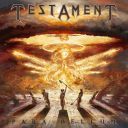
Seedów: 0
Komentarze: 0
Data dodania:
2025-12-21 17:48:41
Rozmiar: 386.27 MB
Peerów: 0
Dodał: Fallen_Angel
Opis
...SIŁA I PIĘKNO MUZYKI TKWIĄ W JEJ RÓŻNORODNOŚCI..
..::OPIS::.. Reedycja albumu Dragon z 1994 roku. Na potrzeby reedycji "Sacrifice" został poddany ponownemu masteringowi za który odpowiedzialny jest Piotr Mańkowski (Coverius Studio). Za nową oprawę graficzną zadbał Paweł Ozon (XXV The Sign). Oryginalnie "Sacrifice" ukazał się w 1994 roku tylko w formie kasety magnetofonowej wydanej nakładem Baron Records. ..::TRACK-LIST::.. 1. Return 05:53 2. Living And Suffering 03:21 3. Death From Agony 04:14 4. Route Of Unworthy Rest 04:19 5. Time For 'Last Farewell' 05:28 6. Spell Of Recollection 05:38 7. 4 W.D.W. 02:07 8. Sacrifice 03:39 9. Looking For The Death 03:25 10. The Mystic 03:32 11. Yog Sothoth 04:15 12. Crying Woman 03:36 ..::OBSADA::.. Adrian 'Fred' Frelich - vocal Jarosław 'Gronos' Gronowski - guitar Grzegorz 'Demon' Mroczek - bass Krystian 'Bomba' Bytom - drums https://www.youtube.com/watch?v=rZtdyJ1lIwk SEED 15:00-22:00. POLECAM!!! 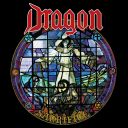
Seedów: 0
Komentarze: 0
Data dodania:
2025-12-20 12:20:35
Rozmiar: 118.75 MB
Peerów: 0
Dodał: Fallen_Angel
Opis
...SIŁA I PIĘKNO MUZYKI TKWIĄ W JEJ RÓŻNORODNOŚCI..
..::OPIS::.. Reedycja albumu Dragon z 1994 roku. Na potrzeby reedycji "Sacrifice" został poddany ponownemu masteringowi za który odpowiedzialny jest Piotr Mańkowski (Coverius Studio). Za nową oprawę graficzną zadbał Paweł Ozon (XXV The Sign). Oryginalnie "Sacrifice" ukazał się w 1994 roku tylko w formie kasety magnetofonowej wydanej nakładem Baron Records. ..::TRACK-LIST::.. 1. Return 05:53 2. Living And Suffering 03:21 3. Death From Agony 04:14 4. Route Of Unworthy Rest 04:19 5. Time For 'Last Farewell' 05:28 6. Spell Of Recollection 05:38 7. 4 W.D.W. 02:07 8. Sacrifice 03:39 9. Looking For The Death 03:25 10. The Mystic 03:32 11. Yog Sothoth 04:15 12. Crying Woman 03:36 ..::OBSADA::.. Adrian 'Fred' Frelich - vocal Jarosław 'Gronos' Gronowski - guitar Grzegorz 'Demon' Mroczek - bass Krystian 'Bomba' Bytom - drums https://www.youtube.com/watch?v=rZtdyJ1lIwk SEED 15:00-22:00. POLECAM!!! 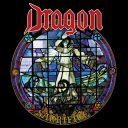
Seedów: 0
Komentarze: 0
Data dodania:
2025-12-20 12:16:19
Rozmiar: 374.37 MB
Peerów: 0
Dodał: Fallen_Angel
Opis
...SIŁA I PIĘKNO MUZYKI TKWIĄ W JEJ RÓŻNORODNOŚCI...
..::OPIS::.. Ponad 40 lat od powstania śląski Dragon uderza z pierwszym w historii, pełnoprawnym albumem koncertowym. Materiał zawarty na "Live In Pain" zarejestrowano podczas wspólnej trasy koncertowej z Wolf Spider i zawiera on fragmenty koncertów z takich miast jak Krosno, Poznań i Zabrze. Masywna dawka koncertowej energii została zamknięta w czternastu starannie dobranych utworach prezentujących przekrój wieloletniego dorobku zespołu. Ciekawostką jest, że wydanie CD zawiera dwa bonusowe utwory, pojawiające się w przeszłości jedynie na koncertowych kompilacjach, i które dla odmiany zostały po raz pierwszy zarejestrowane studyjnie. Za masywne brzmienie odpowiada Piotr Kowalski, który zadbał o realizację, mix i mastering wersji CD, natomiast wydanie winylowe zyskało nowy wymiar dzięki masteringowi Piotra Mańkowskiego. Całość dopełnia szata graficzna opracowana przez Szatańca, który jest także wydawcą albumu. To wydawnictwo zawarte na podwójnym winylu i podwójnym CD, to must-have dla każdego fana polskiego thrash/death metalu. ..::TRACK-LIST::.. CD 1: 1. Unde Malum I 2. Nie zabijaj ze strachu 3. Beliar 4. Upadły anioł I 5. Nie zginaj kolan 6. Unde Malum II 7. Przemoc 8. Upadły anioł II CD 2: 1. Arcydzieło zagłady 2. Łzy szatana 3. Morderca 4. Szymon Piotr 5. Unde Malum III 6. Armageddon 7. Niedaleki koniec 8. Dzień pogrzebu ..::OBSADA::.. Jarek 'Gronos' Gronowski - Guitars Janek Traciński - Drums Adrian Frelich - Vocals Mikołaj Toczko - Drums Krzysztof 'Fazi' Oset - Bass https://www.youtube.com/watch?v=ziXahmSB8hs SEED 15:00-22:00. POLECAM!!! 
Seedów: 0
Komentarze: 0
Data dodania:
2025-12-14 09:02:23
Rozmiar: 210.72 MB
Peerów: 0
Dodał: Fallen_Angel
Opis
...SIŁA I PIĘKNO MUZYKI TKWIĄ W JEJ RÓŻNORODNOŚCI...
..::OPIS::.. Ponad 40 lat od powstania śląski Dragon uderza z pierwszym w historii, pełnoprawnym albumem koncertowym. Materiał zawarty na "Live In Pain" zarejestrowano podczas wspólnej trasy koncertowej z Wolf Spider i zawiera on fragmenty koncertów z takich miast jak Krosno, Poznań i Zabrze. Masywna dawka koncertowej energii została zamknięta w czternastu starannie dobranych utworach prezentujących przekrój wieloletniego dorobku zespołu. Ciekawostką jest, że wydanie CD zawiera dwa bonusowe utwory, pojawiające się w przeszłości jedynie na koncertowych kompilacjach, i które dla odmiany zostały po raz pierwszy zarejestrowane studyjnie. Za masywne brzmienie odpowiada Piotr Kowalski, który zadbał o realizację, mix i mastering wersji CD, natomiast wydanie winylowe zyskało nowy wymiar dzięki masteringowi Piotra Mańkowskiego. Całość dopełnia szata graficzna opracowana przez Szatańca, który jest także wydawcą albumu. To wydawnictwo zawarte na podwójnym winylu i podwójnym CD, to must-have dla każdego fana polskiego thrash/death metalu. ..::TRACK-LIST::.. CD 1: 1. Unde Malum I 2. Nie zabijaj ze strachu 3. Beliar 4. Upadły anioł I 5. Nie zginaj kolan 6. Unde Malum II 7. Przemoc 8. Upadły anioł II CD 2: 1. Arcydzieło zagłady 2. Łzy szatana 3. Morderca 4. Szymon Piotr 5. Unde Malum III 6. Armageddon 7. Niedaleki koniec 8. Dzień pogrzebu ..::OBSADA::.. Jarek 'Gronos' Gronowski - Guitars Janek Traciński - Drums Adrian Frelich - Vocals Mikołaj Toczko - Drums Krzysztof 'Fazi' Oset - Bass https://www.youtube.com/watch?v=ziXahmSB8hs SEED 15:00-22:00. POLECAM!!! 
Seedów: 0
Komentarze: 0
Data dodania:
2025-12-14 08:58:37
Rozmiar: 687.44 MB
Peerów: 0
Dodał: Fallen_Angel
Opis
...SIŁA I PIĘKNO MUZYKI TKWIĄ W JEJ RÓŻNORODNOŚCI...
..::OPIS::.. Reedycja drugiego albumu Vulcano z 1987. To nadal bestialski thrash srogo doprawiony elementami zaczerpniętymi z black i death metalu. FA ..::TRACK-LIST::.. 1. Red Death 03:35 2. Death Angel´s Armies 02:33 3. Brainwash 02:50 4. F.T.W.(Fuck the War) 03:01 5. Fallen Angel 06:33 6. Anthropophagy 02:52 7. Anyone Can kill 04:06 8. Stirring 03:56 9. (Am I Crazy?) 01:00 10. Megathrash 03:12 11. Upright 03:16 ..::OBSADA::.. Zhema Rodero - guitars Angel - vocals Fernando Levine - bass Arthur 'von barbarian' - drums https://www.youtube.com/watch?v=BdXtS4Cpbas SEED 15:00-22:00. POLECAM!!! 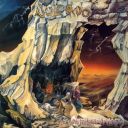
Seedów: 0
Komentarze: 0
Data dodania:
2025-12-11 19:33:12
Rozmiar: 86.65 MB
Peerów: 0
Dodał: Fallen_Angel
Opis
...SIŁA I PIĘKNO MUZYKI TKWIĄ W JEJ RÓŻNORODNOŚCI...
..::OPIS::.. Reedycja drugiego albumu Vulcano z 1987. To nadal bestialski thrash srogo doprawiony elementami zaczerpniętymi z black i death metalu. FA ..::TRACK-LIST::.. 1. Red Death 03:35 2. Death Angel´s Armies 02:33 3. Brainwash 02:50 4. F.T.W.(Fuck the War) 03:01 5. Fallen Angel 06:33 6. Anthropophagy 02:52 7. Anyone Can kill 04:06 8. Stirring 03:56 9. (Am I Crazy?) 01:00 10. Megathrash 03:12 11. Upright 03:16 ..::OBSADA::.. Zhema Rodero - guitars Angel - vocals Fernando Levine - bass Arthur 'von barbarian' - drums https://www.youtube.com/watch?v=BdXtS4Cpbas SEED 15:00-22:00. POLECAM!!! 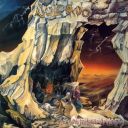
Seedów: 0
Komentarze: 0
Data dodania:
2025-12-11 19:28:43
Rozmiar: 265.71 MB
Peerów: 0
Dodał: Fallen_Angel
Opis
...SIŁA I PIĘKNO MUZYKI TKWIĄ W JEJ RÓŻNORODNOŚCI...
Doskonały krążek! Niczym Anthrax z okresu 'Among the Living' Klasyk thrash metalu! ..::TRACK-LIST::.. CD 1: 1. Opinionate! 2. In The Mean Time 3. Rebel Without A Brain 4. King In Exile 5. Face The Fat Reality / Outro 6. I Too Eye 7. Diplomatic Immunity 8. Process Of Assimilation 9. Tears Of Orpheus 10. Aftermath Of Betrayal (The Tragedy Of Hamlet) 11. Finale 12. M.E.S. (Technical Difficulties) CD 2 - Bonus: 1. On To Iliad (Live At Fox Studios 1986) 2. Warpath To Repression (Live At Fox Studios 1986) 3. Nightstalker (Rough Mix) 4. Sledgehammer Press (Instrumental) 5. Nightrider (1983 Live At Fox Studios) 6. First Degree Sleepwalking (Unreleased) 7. Amerasian Reparation (Non-Fiction / Hades 1990) 8. Girls Will Be Girls (1982) 9. Social Disease (1982) 10. Bete Noir 11. Think Tank (2005) ..::OBSADA::.. Vocals - Alan Tecchio Guitar - Dan Lorenzo, Ed Fuhrman Drums - T. Coombs Bass - Jimmy Schulman https://www.youtube.com/watch?v=HgKyTNeFxFw SEED 15:00-22:00. POLECAM!!! 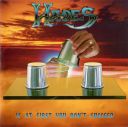
Seedów: 0
Komentarze: 0
Data dodania:
2025-12-08 20:28:17
Rozmiar: 211.74 MB
Peerów: 0
Dodał: Fallen_Angel
Opis
...SIŁA I PIĘKNO MUZYKI TKWIĄ W JEJ RÓŻNORODNOŚCI...
Doskonały krążek! Niczym Anthrax z okresu 'Among the Living' Klasyk thrash metalu! ..::TRACK-LIST::.. CD 1: 1. Opinionate! 2. In The Mean Time 3. Rebel Without A Brain 4. King In Exile 5. Face The Fat Reality / Outro 6. I Too Eye 7. Diplomatic Immunity 8. Process Of Assimilation 9. Tears Of Orpheus 10. Aftermath Of Betrayal (The Tragedy Of Hamlet) 11. Finale 12. M.E.S. (Technical Difficulties) CD 2 - Bonus: 1. On To Iliad (Live At Fox Studios 1986) 2. Warpath To Repression (Live At Fox Studios 1986) 3. Nightstalker (Rough Mix) 4. Sledgehammer Press (Instrumental) 5. Nightrider (1983 Live At Fox Studios) 6. First Degree Sleepwalking (Unreleased) 7. Amerasian Reparation (Non-Fiction / Hades 1990) 8. Girls Will Be Girls (1982) 9. Social Disease (1982) 10. Bete Noir 11. Think Tank (2005) ..::OBSADA::.. Vocals - Alan Tecchio Guitar - Dan Lorenzo, Ed Fuhrman Drums - T. Coombs Bass - Jimmy Schulman https://www.youtube.com/watch?v=HgKyTNeFxFw SEED 15:00-22:00. POLECAM!!! 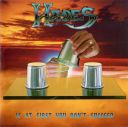
Seedów: 0
Komentarze: 0
Data dodania:
2025-12-08 20:23:16
Rozmiar: 624.27 MB
Peerów: 0
Dodał: Fallen_Angel
Opis
...SIŁA I PIĘKNO MUZYKI TKWIĄ W JEJ RÓŻNORODNOŚCI...
..::OPIS::.. Divine Spiritual and Intellectual Development" is 1990 debut album by the Dutch thrash band Usurper, formed in 1985. The album their debut full-length release that features nine tracks, including "Egoistic Mind" and "Diseased Reality". Despite its ambitious title, the music is described by some as more of a straightforward, late-'80s thrash sound, the production, with its airy, powerful guitar tone and reverb-strong mixing gives it a timeless draw. The best late 80’s Dutch thrash bands were those that rapidly made the transition into a death/thrash hybrid, and then often into full on death metal. Pestilence, Thanatos, all need no introduction, but there were very few bands that stuck with the initial genre and met any kind of success. Usurper is a pretty rare find, a group that actually started off as a death metal act (they put out a demo as Sepulchral Death) and then evolved into a pure thrash act. All 3 demos, Sepulchral Death (considered as Usurper demo 1) demo 1 1986, Chants of Traducement Demo 2, 1987, Demo 3 from 1988 and full length Divine Spiritual and Intellectual Development are included on this massive double cd and double vinyl re-issue. The booklet contains rare and old pictures, flyers and posters. Extensive liner notes from Steven Willems (Rock Tribune, Streams of Ancient Wisdom: The History of Dutch Death And Extreme Metal). ..::TRACK-LIST::.. CD 1: 1. Egoistic Mind 2. Enthralment Fate 3. Diseased Reality 4. The Room 5. Insane Decisions 6. Behind Mandela's Mask 7. Infest the Convent 8. Ozon Tragedy 9. Orphanage Children Live in Nighttown, Rotterdam 1990 10. Insane Decisions 11. Behind Mandela's Mask 12. The Room 13. A Crime to Satisfy 14. Egoistic Mind 15. Ozon Tragedy CD 2: Demo 3 - 1988 1. Insane Decisions 2. The Room 3. Orphanage Children 'Chants of Traducement' Demo 1987 4. Habeas Corpus 5. Enthrallment Fate 6. Parables of Terror 7. Infest the Content 'Sepulchral Death - Praising Death' Demo 1986 8. Schizophrenic Doom 9. Praising Death 10. Sepulchral Death 11. Capitol Punishment 12. Exaltation of the Cross 13. Mutual Repugnance ..::OBSADA::.. Vocals, Guitar - Patrick Harreman Bass - Dennis Verhiest Drums - Jos De Jong, Koen Westphal Guitar - Boudewijn Molendijk https://www.youtube.com/watch?v=PBKr49TdUqU SEED 15:00-22:00. POLECAM!!! 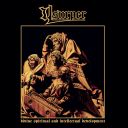
Seedów: 0
Komentarze: 0
Data dodania:
2025-12-07 10:09:44
Rozmiar: 290.35 MB
Peerów: 0
Dodał: Fallen_Angel
Opis
...SIŁA I PIĘKNO MUZYKI TKWIĄ W JEJ RÓŻNORODNOŚCI...
..::OPIS::.. Divine Spiritual and Intellectual Development" is 1990 debut album by the Dutch thrash band Usurper, formed in 1985. The album their debut full-length release that features nine tracks, including "Egoistic Mind" and "Diseased Reality". Despite its ambitious title, the music is described by some as more of a straightforward, late-'80s thrash sound, the production, with its airy, powerful guitar tone and reverb-strong mixing gives it a timeless draw. The best late 80’s Dutch thrash bands were those that rapidly made the transition into a death/thrash hybrid, and then often into full on death metal. Pestilence, Thanatos, all need no introduction, but there were very few bands that stuck with the initial genre and met any kind of success. Usurper is a pretty rare find, a group that actually started off as a death metal act (they put out a demo as Sepulchral Death) and then evolved into a pure thrash act. All 3 demos, Sepulchral Death (considered as Usurper demo 1) demo 1 1986, Chants of Traducement Demo 2, 1987, Demo 3 from 1988 and full length Divine Spiritual and Intellectual Development are included on this massive double cd and double vinyl re-issue. The booklet contains rare and old pictures, flyers and posters. Extensive liner notes from Steven Willems (Rock Tribune, Streams of Ancient Wisdom: The History of Dutch Death And Extreme Metal). ..::TRACK-LIST::.. CD 1: 1. Egoistic Mind 2. Enthralment Fate 3. Diseased Reality 4. The Room 5. Insane Decisions 6. Behind Mandela's Mask 7. Infest the Convent 8. Ozon Tragedy 9. Orphanage Children Live in Nighttown, Rotterdam 1990 10. Insane Decisions 11. Behind Mandela's Mask 12. The Room 13. A Crime to Satisfy 14. Egoistic Mind 15. Ozon Tragedy CD 2: Demo 3 - 1988 1. Insane Decisions 2. The Room 3. Orphanage Children 'Chants of Traducement' Demo 1987 4. Habeas Corpus 5. Enthrallment Fate 6. Parables of Terror 7. Infest the Content 'Sepulchral Death - Praising Death' Demo 1986 8. Schizophrenic Doom 9. Praising Death 10. Sepulchral Death 11. Capitol Punishment 12. Exaltation of the Cross 13. Mutual Repugnance ..::OBSADA::.. Vocals, Guitar - Patrick Harreman Bass - Dennis Verhiest Drums - Jos De Jong, Koen Westphal Guitar - Boudewijn Molendijk https://www.youtube.com/watch?v=PBKr49TdUqU SEED 15:00-22:00. POLECAM!!! 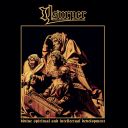
Seedów: 0
Komentarze: 0
Data dodania:
2025-12-07 10:05:16
Rozmiar: 871.88 MB
Peerów: 0
Dodał: Fallen_Angel
Opis
...SIŁA I PIĘKNO MUZYKI TKWIĄ W JEJ RÓŻNORODNOŚCI...
..::OPIS::.. Świetny debiut z 'Miasta Aniołów' plus, jako bonusy 'Peace Through Violence' - demo z 1991 roku. I first heard about this record a couple of years ago when someone sent me a link to one of their songs. It was of poor quality kind of hard to hear, but I was able to enjoy it regardless. Then I was able to get a burnt copy of the CD but it was also in poor quality and I had enough of that. The hunt was on, on finding this rare CD. I went everywhere to find it and came up empty handed, until 2 years later. I found a CD of theirs in great condition and did not hesitate in purchasing it. Being more than happy, I decided it was time to give this album a listen from beginning to end in my Chevrolet pick-up truck. I find this band appealing because they're from Los Angeles and all the members in recording this album were of Hispanic descent. In the time this album came out it was flooded with all the nirvana garbage that was playing on the radio and MTV. They knew they didn’t have a chance to get any airplay, but still proceeded to tour and gain their fans. This record is pure Crossover-Thrash with elements of Speed Metal and makes no apologies about it. This is one of these records that you have to play from beginning to end. The riffs are nice and fast, Art Marquez & Choy Sandoval gives it a mix of Dark Angel and Suicidal Tendencies put together. The bass is at a perfect tone on this record, giving the songs an extra bit of depth that I hear every time I listen to it on my Zune. The singing from Tom Urioste is the perfect mix of punk and metal. He’s not going to be confused for Ron Rinehart or Mike Muir but it’s still good. I also see an influence of Megadeth as the political tones the song title and song titles give in reference to the environment and world peace. They do in a way were its not too pushy or annoying, which is something that is difficult to do without looking to much of a bleeding heart liberal. They just give enough for the listener to think of what they’re trying to say and make up their own minds. The songs that stick out for me the most are Funeral Parlor, The Damnation of Humanization, The Day After, Peace Through Violence, Raping Mother Nature, Fundamental Mental Derangement, Severance Pay and Trying to Be Cool. They seem to be the ones I play over and over in my truck and on my Zune. It’s a shame that this record did not get more recognition than it did. But they still have some sort of a hardcore following even they had only released this record and a demo a couple years before. Thanks to this generations technology with Soulseek and YouTube a new generation of fans will come, a new set of ears for a new set of metal heads. I still have this album on constant rotation on my playlist and always try to spread their album to other people. chevymetal1986 ..::TRACK-LIST::.. 1. Funeral Parlor 5:31 2. The Day After 6:01 3. Tombs Of Forgotten Souls 4:11 4. Fundamental Mental Derangement 6:40 5. Raping Mother Nature 3:49 6. The Damnation Of Humanization 3:56 7. Methamphetamine 3:12 8. Peace Through Violence 3:18 9. Pit Of Ignorance 5:22 10. Severance Pay 4:28 11. Trying To Be Cool 1:14 Bonus Tracks 'Demo 1991': 12. Peace Through Violence 3:29 13. Raping Mother Nature 3:59 14. Funeral Parlor 5:35 15. Damnation Of Humanization 4:03 16. Pit Of Ignorance 5:25 17. Trying To Be Cool 1:05 ..::OBSADA::.. Lelo Rodriguez - Bass Javier Palomino - Drums Art Marquez - Guitars (rhythm) Chuy Sandoval - Guitars (lead) Tom Urioste - Vocals https://www.youtube.com/watch?v=UesrxnvLzDQ SEED 15:00-22:00. POLECAM!!! 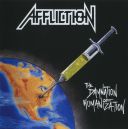
Seedów: 0
Komentarze: 0
Data dodania:
2025-11-30 12:14:33
Rozmiar: 165.47 MB
Peerów: 0
Dodał: Fallen_Angel
Opis
...SIŁA I PIĘKNO MUZYKI TKWIĄ W JEJ RÓŻNORODNOŚCI...
..::OPIS::.. Świetny debiut z 'Miasta Aniołów' plus, jako bonusy 'Peace Through Violence' - demo z 1991 roku. I first heard about this record a couple of years ago when someone sent me a link to one of their songs. It was of poor quality kind of hard to hear, but I was able to enjoy it regardless. Then I was able to get a burnt copy of the CD but it was also in poor quality and I had enough of that. The hunt was on, on finding this rare CD. I went everywhere to find it and came up empty handed, until 2 years later. I found a CD of theirs in great condition and did not hesitate in purchasing it. Being more than happy, I decided it was time to give this album a listen from beginning to end in my Chevrolet pick-up truck. I find this band appealing because they're from Los Angeles and all the members in recording this album were of Hispanic descent. In the time this album came out it was flooded with all the nirvana garbage that was playing on the radio and MTV. They knew they didn’t have a chance to get any airplay, but still proceeded to tour and gain their fans. This record is pure Crossover-Thrash with elements of Speed Metal and makes no apologies about it. This is one of these records that you have to play from beginning to end. The riffs are nice and fast, Art Marquez & Choy Sandoval gives it a mix of Dark Angel and Suicidal Tendencies put together. The bass is at a perfect tone on this record, giving the songs an extra bit of depth that I hear every time I listen to it on my Zune. The singing from Tom Urioste is the perfect mix of punk and metal. He’s not going to be confused for Ron Rinehart or Mike Muir but it’s still good. I also see an influence of Megadeth as the political tones the song title and song titles give in reference to the environment and world peace. They do in a way were its not too pushy or annoying, which is something that is difficult to do without looking to much of a bleeding heart liberal. They just give enough for the listener to think of what they’re trying to say and make up their own minds. The songs that stick out for me the most are Funeral Parlor, The Damnation of Humanization, The Day After, Peace Through Violence, Raping Mother Nature, Fundamental Mental Derangement, Severance Pay and Trying to Be Cool. They seem to be the ones I play over and over in my truck and on my Zune. It’s a shame that this record did not get more recognition than it did. But they still have some sort of a hardcore following even they had only released this record and a demo a couple years before. Thanks to this generations technology with Soulseek and YouTube a new generation of fans will come, a new set of ears for a new set of metal heads. I still have this album on constant rotation on my playlist and always try to spread their album to other people. chevymetal1986 ..::TRACK-LIST::.. 1. Funeral Parlor 5:31 2. The Day After 6:01 3. Tombs Of Forgotten Souls 4:11 4. Fundamental Mental Derangement 6:40 5. Raping Mother Nature 3:49 6. The Damnation Of Humanization 3:56 7. Methamphetamine 3:12 8. Peace Through Violence 3:18 9. Pit Of Ignorance 5:22 10. Severance Pay 4:28 11. Trying To Be Cool 1:14 Bonus Tracks 'Demo 1991': 12. Peace Through Violence 3:29 13. Raping Mother Nature 3:59 14. Funeral Parlor 5:35 15. Damnation Of Humanization 4:03 16. Pit Of Ignorance 5:25 17. Trying To Be Cool 1:05 ..::OBSADA::.. Lelo Rodriguez - Bass Javier Palomino - Drums Art Marquez - Guitars (rhythm) Chuy Sandoval - Guitars (lead) Tom Urioste - Vocals https://www.youtube.com/watch?v=UesrxnvLzDQ SEED 15:00-22:00. POLECAM!!! 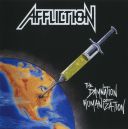
Seedów: 0
Komentarze: 0
Data dodania:
2025-11-30 11:48:51
Rozmiar: 471.94 MB
Peerów: 0
Dodał: Fallen_Angel
Opis
...SIŁA I PIĘKNO MUZYKI TKWIĄ W JEJ RÓŻNORODNOŚCI...
..::OPIS::.. Trzeci duży album klasyków niemieckiego thrashu z 1988 wznowiony na CD! Escalation seems like the perfect title for the third Necronomicon full-length, due to its direct correlation to the quality of the album. After a pair of duds in the debut Necronomicon and the well meaning sophomore Apocalyptic Nightmare, the Germans had hit their stride, no longer just a mirror of the better known Destruction, but a band with something of worth to offer on their own. That's not to say that they had suddenly bloomed into a garden of innovation and supreme songcraft, because this is still not a top shelf release, yet it's the first of their effort that I'd honestly label entertaining and fun. It's also the last in their deal with Gama Records, but despite a few reissues, the album has sadly gathered no moss as it rolled down the heights into obscurity. The band was down to a three piece here, with Volker Fredrich and Jürgen Weltin picking up the bass duties from the departed Lars Honeck. Fredrich still sounds mildly similar to Schmier of Destruction, and yet he's acquired a harsher, standout bark to his tone that ends itself towards an individual distinction. There are also a number of well-placed gang shouts here that propel his presence quite nicely ("Death Toll", "Black Frost", "Murder of Profit"). But most importantly, where the band always seemed to have a problem plotting out convincing songs before, they've really gelled here. Each of the tracks holds its own weight in riffs, and half of them are actually memorable. "Death Toll" has some great guitars and bass, whether they're thrusting along the speedway of the bridge or chopping out the slower verse chugging. "Skeletal Remains" is the closest to Destruction, but nonetheless excellent; "Mosh the ABC" defies its terrible title with bristling energy; "...And the Night Will Be Silent" reminds me of old Slayer, Hell Awaits era, but with gang shouts and more melody. "Cold Ages (Darkland III)" is a fitting sequel to the band's ongoing series, superior to either of the previous chapters. Perhaps the one glaring and awkward song here is "Dirty Minds", which feels like sort of punk rock corny anthem, despite the fact that it veers off into perfectly acceptable territory. No one wants to hear Fredrich making such sounds as he does before the verse, even if he compensates with wicked laughter. Strangely, there are a few decent riffs tucked in there, and had it gone for a straight up German mid paced metal track like S.A.D.O. would write, it might have worked. Otherwise, the album is consistently well executed, with great leads and a fine, airy, lo-fi tone that doesn't betray the rugged roots of their prior works. Necronomicon might not be an A-list thrash act for their nation, never spoken of in the same breaths as Kreator, Sodom or Tankard; but Escalation is their crown jewel, the first album you should check out if you've seen the name and manifested some interest. It's fun, it's not too serious, and it's more than capable of whipping up a headbanging storm from anyone into that age old German tone. autothrall This album is pretty much at the triple point (oh shit, a chemistry reference... society, what have you done to me????) of heavy metal, where thrash, speed, and power metal can all exist concurrently. For the most part I'd call this a power-metal album, thanks to the melodic overtones that are straight out of the first-Helloween album except not quite as fast, thus I can't really call it speed metal, except for the parts that ARE speed metal, like the main riff of "Murder of Profit" or "Death Toll", or pretty much the main backbone riff of all the songs is actually basically the same, a sort of thrash-speed hybrid not unlike that of old Destruction except not quite as thrashy. This isn't a really creative album, though when they mix in a different riff, like the Quintessential Power Metal Riff (think "Two Minutes to Midnight" meets half of Ample Destruction meets even the first riff of Overkill by Overkill (not Overkill by Motorhead)) in "And the Night Will be Silent". Then there are the thrash breaks, like the aforementioned "Death Toll", or the next song, "Black Frost", or even the not quite as overt but nonetheless thrash riff in "And the Night Will Be Silent". So, point proven, it's the logical mixture of the three basic styles of heavy metal of the 80s. It's something that is unequivocally metal, and pretty German too when all is said and done. Again, the main riffage is a speedier Destruction, but the vocals and also the guitar licks are more melodic. Sometimes it's the bass that plays the main bludgeon riff while the guitar goes off and plays some quick interlude. Oh yeah, these guys have the idea of a gang chorus down to a fucking art form. I have no idea what they are actually saying most of the time, especially in the first song, Death Toll ("tombstone's the limit"?!??). By far highlight of the album right there, because the thrash part is a real fucking monster, and it's 6 minutes and stays interesting, and it's really a thrash classic when all is said and done. LET'S GO! FUCK THE TORTURE!! As for the rest - it kinda fades after that but still maintains a decent level that stays above mediocrity. It's not something I'd pop in every week like, for example, Product of Imagination (the quintessential German power/speed/thrash triple-point album) but still, it goes to show that those Germans of the mid-1980s could do no WRONG (well, except maybe Vectom, ha!). Even the average of the subgenre, like this album, is still pretty fucking good. UltraBoris ..::TRACK-LIST::.. 1. Death Toll 6:09 2. Black Frost 2:21 3. Dirty Minds 3:38 4. Skeletal Remains 3:27 5. Murder Of Profit 3:55 6. ...And The Night Will Be Silent 4:29 7. Mosh The ABC 2:17 8. Cold Ages (Darkland III) 6:40 ..::OBSADA::.. Vocals, Guitars, Backing Vocals, Bass - Freddy Drums - Axel Guitars, Backing Vocals, Bass - Jogi https://www.youtube.com/watch?v=kg0xJv6giz4 SEED 15:00-22:00. POLECAM!!! 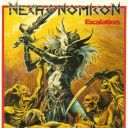
Seedów: 0
Komentarze: 0
Data dodania:
2025-11-18 17:46:23
Rozmiar: 76.16 MB
Peerów: 0
Dodał: Fallen_Angel
Opis
...SIŁA I PIĘKNO MUZYKI TKWIĄ W JEJ RÓŻNORODNOŚCI...
..::OPIS::.. Trzeci duży album klasyków niemieckiego thrashu z 1988 wznowiony na CD! Escalation seems like the perfect title for the third Necronomicon full-length, due to its direct correlation to the quality of the album. After a pair of duds in the debut Necronomicon and the well meaning sophomore Apocalyptic Nightmare, the Germans had hit their stride, no longer just a mirror of the better known Destruction, but a band with something of worth to offer on their own. That's not to say that they had suddenly bloomed into a garden of innovation and supreme songcraft, because this is still not a top shelf release, yet it's the first of their effort that I'd honestly label entertaining and fun. It's also the last in their deal with Gama Records, but despite a few reissues, the album has sadly gathered no moss as it rolled down the heights into obscurity. The band was down to a three piece here, with Volker Fredrich and Jürgen Weltin picking up the bass duties from the departed Lars Honeck. Fredrich still sounds mildly similar to Schmier of Destruction, and yet he's acquired a harsher, standout bark to his tone that ends itself towards an individual distinction. There are also a number of well-placed gang shouts here that propel his presence quite nicely ("Death Toll", "Black Frost", "Murder of Profit"). But most importantly, where the band always seemed to have a problem plotting out convincing songs before, they've really gelled here. Each of the tracks holds its own weight in riffs, and half of them are actually memorable. "Death Toll" has some great guitars and bass, whether they're thrusting along the speedway of the bridge or chopping out the slower verse chugging. "Skeletal Remains" is the closest to Destruction, but nonetheless excellent; "Mosh the ABC" defies its terrible title with bristling energy; "...And the Night Will Be Silent" reminds me of old Slayer, Hell Awaits era, but with gang shouts and more melody. "Cold Ages (Darkland III)" is a fitting sequel to the band's ongoing series, superior to either of the previous chapters. Perhaps the one glaring and awkward song here is "Dirty Minds", which feels like sort of punk rock corny anthem, despite the fact that it veers off into perfectly acceptable territory. No one wants to hear Fredrich making such sounds as he does before the verse, even if he compensates with wicked laughter. Strangely, there are a few decent riffs tucked in there, and had it gone for a straight up German mid paced metal track like S.A.D.O. would write, it might have worked. Otherwise, the album is consistently well executed, with great leads and a fine, airy, lo-fi tone that doesn't betray the rugged roots of their prior works. Necronomicon might not be an A-list thrash act for their nation, never spoken of in the same breaths as Kreator, Sodom or Tankard; but Escalation is their crown jewel, the first album you should check out if you've seen the name and manifested some interest. It's fun, it's not too serious, and it's more than capable of whipping up a headbanging storm from anyone into that age old German tone. autothrall This album is pretty much at the triple point (oh shit, a chemistry reference... society, what have you done to me????) of heavy metal, where thrash, speed, and power metal can all exist concurrently. For the most part I'd call this a power-metal album, thanks to the melodic overtones that are straight out of the first-Helloween album except not quite as fast, thus I can't really call it speed metal, except for the parts that ARE speed metal, like the main riff of "Murder of Profit" or "Death Toll", or pretty much the main backbone riff of all the songs is actually basically the same, a sort of thrash-speed hybrid not unlike that of old Destruction except not quite as thrashy. This isn't a really creative album, though when they mix in a different riff, like the Quintessential Power Metal Riff (think "Two Minutes to Midnight" meets half of Ample Destruction meets even the first riff of Overkill by Overkill (not Overkill by Motorhead)) in "And the Night Will be Silent". Then there are the thrash breaks, like the aforementioned "Death Toll", or the next song, "Black Frost", or even the not quite as overt but nonetheless thrash riff in "And the Night Will Be Silent". So, point proven, it's the logical mixture of the three basic styles of heavy metal of the 80s. It's something that is unequivocally metal, and pretty German too when all is said and done. Again, the main riffage is a speedier Destruction, but the vocals and also the guitar licks are more melodic. Sometimes it's the bass that plays the main bludgeon riff while the guitar goes off and plays some quick interlude. Oh yeah, these guys have the idea of a gang chorus down to a fucking art form. I have no idea what they are actually saying most of the time, especially in the first song, Death Toll ("tombstone's the limit"?!??). By far highlight of the album right there, because the thrash part is a real fucking monster, and it's 6 minutes and stays interesting, and it's really a thrash classic when all is said and done. LET'S GO! FUCK THE TORTURE!! As for the rest - it kinda fades after that but still maintains a decent level that stays above mediocrity. It's not something I'd pop in every week like, for example, Product of Imagination (the quintessential German power/speed/thrash triple-point album) but still, it goes to show that those Germans of the mid-1980s could do no WRONG (well, except maybe Vectom, ha!). Even the average of the subgenre, like this album, is still pretty fucking good. UltraBoris ..::TRACK-LIST::.. 1. Death Toll 6:09 2. Black Frost 2:21 3. Dirty Minds 3:38 4. Skeletal Remains 3:27 5. Murder Of Profit 3:55 6. ...And The Night Will Be Silent 4:29 7. Mosh The ABC 2:17 8. Cold Ages (Darkland III) 6:40 ..::OBSADA::.. Vocals, Guitars, Backing Vocals, Bass - Freddy Drums - Axel Guitars, Backing Vocals, Bass - Jogi https://www.youtube.com/watch?v=kg0xJv6giz4 SEED 15:00-22:00. POLECAM!!! 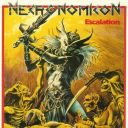
Seedów: 0
Komentarze: 0
Data dodania:
2025-11-18 17:42:02
Rozmiar: 245.40 MB
Peerów: 0
Dodał: Fallen_Angel
Opis
...SIŁA I PIĘKNO MUZYKI TKWIĄ W JEJ RÓŻNORODNOŚCI...
..::OPIS::.. Cult Dutch thrash metal from the late 80’s. Complete discography on cd featuring: Liquidation demo 1988, Sandgrains Ep 1990, Live at Geronimo Rotterdam (restored / remastered by Robbie Woning (Dead Head). The demo and ep were recorded at Franky's Recording Kitchen with Berthus Westerhuys (God Dethroned, Altar, Severe Torture ). The booklet contains old pictures, flyers and extensive liner notes from Steven Willems (Rock Tribune / Voices from the Darkside). Brain Implosion featured members of Abacinate, Remote Control, Out of the System and Radiathor. In total the album contains 15 tracks! ..::TRACK-LIST::.. 1. Liquidation (Liquidation demo 1988) 03:29 2. Lunacy (Liquidation demo 1988) 05:01 3. Implosion Fear Rules (Liquidation demo 1988) 08:50 4. In Your Face (Liquidation demo 1988) 04:47 5. Sandgrains (Sandgrains Ep 1990) 04:51 6. Intramural (Sandgrains Ep 1990) 06:07 7. In Your Face (Live at Geronimo) 05:36 8. Lunacy (Live at Geronimo) 05:15 9. Pikketrekker (Live at Geronimo) 03:25 10. Six Feet (Live at Geronimo) 05:03 11. Fear Rules (Live at Geronimo) 06:46 12. Nostalgia (Live at Geronimo) 03:34 13. Liquidation (Live at Geronimo) 03:55 14. Intra Mural (Live at Geronimo) 06:40 15. New Song (Live at Geronimo) 03:42 Liquidation demo 1988 recorded at Franky's Recording Kitchen, Nieuwleusden, Netherlands. Sandgrains EP 1990 recorded 1989 at Franky's Recording Kitchen, Nieuwleusden, Netherlands. Cover, artwork, design & logo design by Rene R. Live At Geronimo digitalised, restored and remastered by Robbie Woning, Jan. 2024. ..::OBSADA::.. Vocals - Alex Geerts (tracks: 3) Rhythm Guitar - Jochem Steenbergen Lead Guitar, Vocals, Rhythm Guitar - Miguel Van Sloten Bass Guitar - Alex Geerts Drums - Ian Van Sloten https://www.youtube.com/watch?v=LMtWqwdzdN8 SEED 15:00-22:00. POLECAM!!! 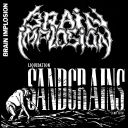
Seedów: 0
Komentarze: 0
Data dodania:
2025-10-12 18:17:34
Rozmiar: 181.45 MB
Peerów: 0
Dodał: Fallen_Angel
Opis
...SIŁA I PIĘKNO MUZYKI TKWIĄ W JEJ RÓŻNORODNOŚCI...
..::OPIS::.. Cult Dutch thrash metal from the late 80’s. Complete discography on cd featuring: Liquidation demo 1988, Sandgrains Ep 1990, Live at Geronimo Rotterdam (restored / remastered by Robbie Woning (Dead Head). The demo and ep were recorded at Franky's Recording Kitchen with Berthus Westerhuys (God Dethroned, Altar, Severe Torture ). The booklet contains old pictures, flyers and extensive liner notes from Steven Willems (Rock Tribune / Voices from the Darkside). Brain Implosion featured members of Abacinate, Remote Control, Out of the System and Radiathor. In total the album contains 15 tracks! ..::TRACK-LIST::.. 1. Liquidation (Liquidation demo 1988) 03:29 2. Lunacy (Liquidation demo 1988) 05:01 3. Implosion Fear Rules (Liquidation demo 1988) 08:50 4. In Your Face (Liquidation demo 1988) 04:47 5. Sandgrains (Sandgrains Ep 1990) 04:51 6. Intramural (Sandgrains Ep 1990) 06:07 7. In Your Face (Live at Geronimo) 05:36 8. Lunacy (Live at Geronimo) 05:15 9. Pikketrekker (Live at Geronimo) 03:25 10. Six Feet (Live at Geronimo) 05:03 11. Fear Rules (Live at Geronimo) 06:46 12. Nostalgia (Live at Geronimo) 03:34 13. Liquidation (Live at Geronimo) 03:55 14. Intra Mural (Live at Geronimo) 06:40 15. New Song (Live at Geronimo) 03:42 Liquidation demo 1988 recorded at Franky's Recording Kitchen, Nieuwleusden, Netherlands. Sandgrains EP 1990 recorded 1989 at Franky's Recording Kitchen, Nieuwleusden, Netherlands. Cover, artwork, design & logo design by Rene R. Live At Geronimo digitalised, restored and remastered by Robbie Woning, Jan. 2024. ..::OBSADA::.. Vocals - Alex Geerts (tracks: 3) Rhythm Guitar - Jochem Steenbergen Lead Guitar, Vocals, Rhythm Guitar - Miguel Van Sloten Bass Guitar - Alex Geerts Drums - Ian Van Sloten https://www.youtube.com/watch?v=LMtWqwdzdN8 SEED 15:00-22:00. POLECAM!!! 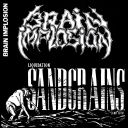
Seedów: 0
Komentarze: 0
Data dodania:
2025-10-12 18:14:38
Rozmiar: 573.21 MB
Peerów: 0
Dodał: Fallen_Angel
Opis
...SIŁA I PIĘKNO MUZYKI TKWIĄ W JEJ RÓŻNORODNOŚCI...
..::OPIS::.. Tak sobie czasem myślę, że chyba najłatwiej tworzyć wariacje na tematy warmetalowe. Nieco więcej umiejętności wymaga kultywowanie oldskulowych tradycji deathmetalowych, czy to o szwedzkim, czy amerykańskim rodowodzie. Ale, powiedzcie sami, ile jest zespołów, które na najwyższym światowym poziomie potrafią tworzyć muzykę opartą o spuściznę mistrzów grania technicznego i progresywnego? Relatywnie niewiele. Debiutem rodzimego Species mocno się swego czasu zachwycałem, mimo, iż nie jest to do końca moje granie. To był taki wyjątek od reguły. Za chwilę panowie wracają z albumem numer dwa, a wiadomo, że po płycie pokroju „To Find Deliverance” poprzeczka ustawiona została niebywale wysoko. Mówi się, że muzyka to nie zawody, a mimo to zawsze jednak gdzieś tam porównujemy, ustawiamy w hierarchii i tak dalej. „Changeling” jest płytą nieco inną, co w przypadku tego zespołu było dla mnie oczywiste zanim jeszcze ją po raz pierwszy włączyłem. Chłopaki są bowiem zbyt ambitni by dreptać w miejscu. Nie powiem, by „Changelings” mnie specjalnie zaskoczył. Spodziewałem się jeszcze większego nacisku na granie progresywne, i dokładnie w tym kierunku Species skręcili. Mniej zatem w nowych kompozycjach pierwiastka thrashowego, więcej nawiązań do wczesnego Cynic, Atheist czy późnego Death. Na płycie tej nie ma w zasadzie klasycznych struktur w temacie zwrotka / refren. Muzyka płynie sobie tylko chcianym nurtem, co chwilę skręcając w bok, lawirując między pomysłami, których jest tu wystarczająco dużo, by obdzielić nimi przynajmniej pięć innych albumów. Przy pierwszym podejściu do „Changelings” można się mocno zdziwić i niejednokrotnie stracić wątek. Nie jest to jednak, jak wielu z was zapewne w tym momencie podejrzewa, muzyczny onanizm. Po kilku rundkach wszystkie te łamańce zaczynają się krystalizować w głowie, i układać w niezwykle zróżnicowaną i mocno malowniczą całość. Niezaprzeczalnie dzieje się tak dzięki wyjątkowym umiejętnościom technicznym muzyków, którzy w bardzo dojrzały sposób łączą ze sobą elementy technicznego death, technicznego thrashu, czy nawet jazzu, jednocześnie zachowując, może nieco schowaną w tle, ale jednak, drapieżność. Co ciekawe, słuchając tych piosenek można odnieść wrażenie, że każda z nich jest inna, każda ma swój własny charakter. A mimo to wszystkie zazębiają się i wzajemnie uzupełniają. Mocno chłopaki tu pokombinowali, oj mocno, także pod względem strukturalnym, nie stroniąc choćby od świetnego instrumentala „Voyager”, po dziesięciominutowego kolosa „Biological Masterpiece” na zakończenie. Wydaje mi się, że nagrali go celowo, trochę by pokazać, że potrafią. I faktycznie, potrafią! Jeden eksperyment im się co prawda nie udał, bo w „Waves of Time” pojawiają się czyste, śpiewane wokale, które działają na mnie niczym płachta na byka, i najchętniej bym je wyjebał w pizdu, ale w ogólnym rozrachunku jakoś można tego babola przełknąć. Materiał ten, podobnie jak w przypadku debiutu, brzmi fantastycznie, a nisko plumkający, jednocześnie wyraźnie słyszalny bas, robi mega robotę. Czuć w tej muzyce nieczęsto spotykany klimat, czuć szczerość, i nawet jeśli chwilami słyszymy tu bardzo wyraźne nawiązania do wspomnianego „Focus” czy „Sounds of Perseverance”, to jest to raczej rozwinięcie myśli autorów owych klasyków niż bezczelne naśladownictwo. Po raz kolejny jestem pod wielkim wrażeniem. Powiem więcej. Uważam, że obecnie na krajowej scenie w rzeczonym gatunku panowie nie mają sobie równych, a i w skali światowej prezentują poziom najwyższej półki. Ode mnie oklaski na stojąco! jesusatan The first album from unconventional Polish power trio Species, ‘To Find Deliverance’, leveled us with its rare blend of technical thrash prowess and unorthodox but highly inspired songwriting, enough to make our best of 2022 album list. Out of that list a collaboration was born and now Species make their 20 Buck Spin debut with second album ‘Changelings’. A step up in every regard, ‘Changelings’ is astonishing in its accomplished precision and how much it manages to achieve within the scope of individual tracks and as a cohesive whole. The album features an overload of angular guitar warfare, traditional Euro-thrash aggression with a modern resonance, rhythmic percussive seizures, and intricate basslines that make their intention deeply felt, not just following the guitar but dialoguing with it in a way that offers a second melodic brain to the album. In combination these elements thread seamlessly to give ‘Changelings’ its colorful and uncanny vision, as if John Carpenter had co-produced ‘Rust In Peace’ behind the iron curtain. It’s bristling with sci-fi paranoia, alien terror and a hint of Cold War menace. The early convergence of Thrash Metal with Death Metal is also unmistakably present in the shape-shifting sound of Species. While there’s more than enough primitive and traditional Thrash bands to go around, Species embraces the genre’s lesser-travelled road of forward-thinking virtuosity and inventive experimentation, showing there’s still plenty of fertile ground to seed new musical territory. Nowhere is it more apparent than on 10-minute album closer ‘Biological Masterpiece’, where Species displays all its weapons; hyperspeed assaults, dystopian lulls and instrumental mastery, in a climatic saga beyond space and time. “Changelings” is that rare album nowadays that still has the ability to surprise in the most triumphant and euphoric way possible. I’ve considered myself a Thrash Disliker for quite a while. Perhaps it was seeing so many local openers in SoCal that seemed to go by the mantra of “Hey, remember that riff from the ’80s? No, the shitty one”, the implosion of a certain Arizona band (and rightfully so) that I once loved, or maybe just the genre itself actually getting stale on the whole. A couple albums this year are forcing me to completely rethink my writing off of thrash, the latest of which comes from the Polish three-piece Species. These Warsaw sci-fi fanatics have crafted a sophomore album that is not just technically proficient, well-written, and keeps the listener on their toes at all times, but is fun as hell from start to finish. This is Changelings. Even though I’m one to rarely gloss over an upcoming 20 Buck Spin release, Changelings felt special right from the get-go with first single “The Essence.” The syncopated riffs that transform bit by bit — shifting rhythms throughout, even if it’s a single extra beat or note thrown in — the prominent bass that doesn’t just mirror the guitars but often complements them with bright fills and melodic lines, the understated drum performance that anchors the entirety of the sound with a similarly wide ranging display of moods; manic thrash skank beats, classic metal rhythms, softer jazz fusion-inspired moments, and more. This three-and-a-half minute tease proved to be a perfect window into the rest of what Species has to offer on this album. One of my favorite aspects of Changelings is the stripped-down nature of the entire production package; it certainly doesn’t feel like lo-fi or akin to a demo, but doesn’t fall into the overproduced wall of sound trap that a lot of “modern” metal seems to be falling into. This shines through especially in how the instruments themselves are tracked. Almost without exception, whenever the guitar is soloing there’s no rhythm guitar; not only does this allow the fantastic performance of vocalist/bassist Piotr Drobina to shine through, it gives the sound a much more authentic feel, like it’s just three guys jamming together in a rehearsal space. And speaking of guitar solos, Michał Kępka has no shortage of them… and they all kick ass. From the neoclassical flourishes in the arpeggiated guitar sweeps that often characterize both solo and riff (“Inspirit Creation”) to the clear ear for melodicism (likely another factor in why this album clicks for me so well), Changelings takes me back to the high school days when I was addicted to the guitar wizardry of Rust in Peace and Hatebreeder. As good as Species are at tech thrash this is very much a progressive metal album as well, with most songs featuring a softer, jazz fusion-inspired section that sees the band exploring even broader horizons. There’s clear echoes of Rush in the instrumental “Voyager” in both the “Xanadu”-esque guitar effects or the “Strangiato” hi-hat roll that kicks off the heavier section of the track. And like that legendary Canadian power trio, this power trio — as incredibly proficient as they are at their respective instruments — never feel like they’re showing off too much, or feeling too self-serious about both their music and lyrical themes. “Born of Stitch and Flesh” opens with a scream of “it’s alive!!!” after all; Species aren’t afraid to have fun in addition to all the complex music. In classic prog fashion the album closes with its longest track, the 10-minute barnburner “Biological Masterpiece” whose tremendous finale reaches for the cosmos in a manner not unlike just Absolute Elsewhere, but the opus of the fallen sci-fi thrash legends I mentioned in the introduction; few songs this year have gotten me as pumped as this one does. My only critique of this song is that it contains the best riff on the entire album, but it’s only played a few times! That just makes the anticipation even more special upon every relisten. Whether you’re a seasoned thrash veteran or a lapsed fan like myself, I find it hard to believe that you’ll find much to dislike about Changelings. Impressive tech thrash and softer prog elements co-exist in great harmony, all wrapped up in a sci-fi package that doesn’t forget to have fun at the end of the day. Thank you to Species for reminding me that great thrash metal is still possible in 2025. Colin ..::TRACK-LIST::.. 1. Inspirit Creation 06:14 2. The Essence 03:26 3. Waves of Time 05:50 4. Voyager 03:18 5. Born of Stitch and Flesh 04:49 6.Terror Unknown 06:19 7. Biological Masterpiece 10:17 ..::OBSADA::.. Piotr Drobina - bass & vocals Przemysław Hampelski - drums, percussion Michał Kępka - guitars Guest synthesizers on 'Voyager' by Krzysztof Buffi https://www.youtube.com/watch?v=djS0vmtLcRM SEED 15:00-22:00. POLECAM!!! 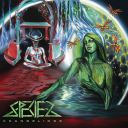
Seedów: 0
Komentarze: 0
Data dodania:
2025-10-02 19:49:23
Rozmiar: 96.10 MB
Peerów: 0
Dodał: Fallen_Angel
Opis
...SIŁA I PIĘKNO MUZYKI TKWIĄ W JEJ RÓŻNORODNOŚCI...
..::OPIS::.. Tak sobie czasem myślę, że chyba najłatwiej tworzyć wariacje na tematy warmetalowe. Nieco więcej umiejętności wymaga kultywowanie oldskulowych tradycji deathmetalowych, czy to o szwedzkim, czy amerykańskim rodowodzie. Ale, powiedzcie sami, ile jest zespołów, które na najwyższym światowym poziomie potrafią tworzyć muzykę opartą o spuściznę mistrzów grania technicznego i progresywnego? Relatywnie niewiele. Debiutem rodzimego Species mocno się swego czasu zachwycałem, mimo, iż nie jest to do końca moje granie. To był taki wyjątek od reguły. Za chwilę panowie wracają z albumem numer dwa, a wiadomo, że po płycie pokroju „To Find Deliverance” poprzeczka ustawiona została niebywale wysoko. Mówi się, że muzyka to nie zawody, a mimo to zawsze jednak gdzieś tam porównujemy, ustawiamy w hierarchii i tak dalej. „Changeling” jest płytą nieco inną, co w przypadku tego zespołu było dla mnie oczywiste zanim jeszcze ją po raz pierwszy włączyłem. Chłopaki są bowiem zbyt ambitni by dreptać w miejscu. Nie powiem, by „Changelings” mnie specjalnie zaskoczył. Spodziewałem się jeszcze większego nacisku na granie progresywne, i dokładnie w tym kierunku Species skręcili. Mniej zatem w nowych kompozycjach pierwiastka thrashowego, więcej nawiązań do wczesnego Cynic, Atheist czy późnego Death. Na płycie tej nie ma w zasadzie klasycznych struktur w temacie zwrotka / refren. Muzyka płynie sobie tylko chcianym nurtem, co chwilę skręcając w bok, lawirując między pomysłami, których jest tu wystarczająco dużo, by obdzielić nimi przynajmniej pięć innych albumów. Przy pierwszym podejściu do „Changelings” można się mocno zdziwić i niejednokrotnie stracić wątek. Nie jest to jednak, jak wielu z was zapewne w tym momencie podejrzewa, muzyczny onanizm. Po kilku rundkach wszystkie te łamańce zaczynają się krystalizować w głowie, i układać w niezwykle zróżnicowaną i mocno malowniczą całość. Niezaprzeczalnie dzieje się tak dzięki wyjątkowym umiejętnościom technicznym muzyków, którzy w bardzo dojrzały sposób łączą ze sobą elementy technicznego death, technicznego thrashu, czy nawet jazzu, jednocześnie zachowując, może nieco schowaną w tle, ale jednak, drapieżność. Co ciekawe, słuchając tych piosenek można odnieść wrażenie, że każda z nich jest inna, każda ma swój własny charakter. A mimo to wszystkie zazębiają się i wzajemnie uzupełniają. Mocno chłopaki tu pokombinowali, oj mocno, także pod względem strukturalnym, nie stroniąc choćby od świetnego instrumentala „Voyager”, po dziesięciominutowego kolosa „Biological Masterpiece” na zakończenie. Wydaje mi się, że nagrali go celowo, trochę by pokazać, że potrafią. I faktycznie, potrafią! Jeden eksperyment im się co prawda nie udał, bo w „Waves of Time” pojawiają się czyste, śpiewane wokale, które działają na mnie niczym płachta na byka, i najchętniej bym je wyjebał w pizdu, ale w ogólnym rozrachunku jakoś można tego babola przełknąć. Materiał ten, podobnie jak w przypadku debiutu, brzmi fantastycznie, a nisko plumkający, jednocześnie wyraźnie słyszalny bas, robi mega robotę. Czuć w tej muzyce nieczęsto spotykany klimat, czuć szczerość, i nawet jeśli chwilami słyszymy tu bardzo wyraźne nawiązania do wspomnianego „Focus” czy „Sounds of Perseverance”, to jest to raczej rozwinięcie myśli autorów owych klasyków niż bezczelne naśladownictwo. Po raz kolejny jestem pod wielkim wrażeniem. Powiem więcej. Uważam, że obecnie na krajowej scenie w rzeczonym gatunku panowie nie mają sobie równych, a i w skali światowej prezentują poziom najwyższej półki. Ode mnie oklaski na stojąco! jesusatan The first album from unconventional Polish power trio Species, ‘To Find Deliverance’, leveled us with its rare blend of technical thrash prowess and unorthodox but highly inspired songwriting, enough to make our best of 2022 album list. Out of that list a collaboration was born and now Species make their 20 Buck Spin debut with second album ‘Changelings’. A step up in every regard, ‘Changelings’ is astonishing in its accomplished precision and how much it manages to achieve within the scope of individual tracks and as a cohesive whole. The album features an overload of angular guitar warfare, traditional Euro-thrash aggression with a modern resonance, rhythmic percussive seizures, and intricate basslines that make their intention deeply felt, not just following the guitar but dialoguing with it in a way that offers a second melodic brain to the album. In combination these elements thread seamlessly to give ‘Changelings’ its colorful and uncanny vision, as if John Carpenter had co-produced ‘Rust In Peace’ behind the iron curtain. It’s bristling with sci-fi paranoia, alien terror and a hint of Cold War menace. The early convergence of Thrash Metal with Death Metal is also unmistakably present in the shape-shifting sound of Species. While there’s more than enough primitive and traditional Thrash bands to go around, Species embraces the genre’s lesser-travelled road of forward-thinking virtuosity and inventive experimentation, showing there’s still plenty of fertile ground to seed new musical territory. Nowhere is it more apparent than on 10-minute album closer ‘Biological Masterpiece’, where Species displays all its weapons; hyperspeed assaults, dystopian lulls and instrumental mastery, in a climatic saga beyond space and time. “Changelings” is that rare album nowadays that still has the ability to surprise in the most triumphant and euphoric way possible. I’ve considered myself a Thrash Disliker for quite a while. Perhaps it was seeing so many local openers in SoCal that seemed to go by the mantra of “Hey, remember that riff from the ’80s? No, the shitty one”, the implosion of a certain Arizona band (and rightfully so) that I once loved, or maybe just the genre itself actually getting stale on the whole. A couple albums this year are forcing me to completely rethink my writing off of thrash, the latest of which comes from the Polish three-piece Species. These Warsaw sci-fi fanatics have crafted a sophomore album that is not just technically proficient, well-written, and keeps the listener on their toes at all times, but is fun as hell from start to finish. This is Changelings. Even though I’m one to rarely gloss over an upcoming 20 Buck Spin release, Changelings felt special right from the get-go with first single “The Essence.” The syncopated riffs that transform bit by bit — shifting rhythms throughout, even if it’s a single extra beat or note thrown in — the prominent bass that doesn’t just mirror the guitars but often complements them with bright fills and melodic lines, the understated drum performance that anchors the entirety of the sound with a similarly wide ranging display of moods; manic thrash skank beats, classic metal rhythms, softer jazz fusion-inspired moments, and more. This three-and-a-half minute tease proved to be a perfect window into the rest of what Species has to offer on this album. One of my favorite aspects of Changelings is the stripped-down nature of the entire production package; it certainly doesn’t feel like lo-fi or akin to a demo, but doesn’t fall into the overproduced wall of sound trap that a lot of “modern” metal seems to be falling into. This shines through especially in how the instruments themselves are tracked. Almost without exception, whenever the guitar is soloing there’s no rhythm guitar; not only does this allow the fantastic performance of vocalist/bassist Piotr Drobina to shine through, it gives the sound a much more authentic feel, like it’s just three guys jamming together in a rehearsal space. And speaking of guitar solos, Michał Kępka has no shortage of them… and they all kick ass. From the neoclassical flourishes in the arpeggiated guitar sweeps that often characterize both solo and riff (“Inspirit Creation”) to the clear ear for melodicism (likely another factor in why this album clicks for me so well), Changelings takes me back to the high school days when I was addicted to the guitar wizardry of Rust in Peace and Hatebreeder. As good as Species are at tech thrash this is very much a progressive metal album as well, with most songs featuring a softer, jazz fusion-inspired section that sees the band exploring even broader horizons. There’s clear echoes of Rush in the instrumental “Voyager” in both the “Xanadu”-esque guitar effects or the “Strangiato” hi-hat roll that kicks off the heavier section of the track. And like that legendary Canadian power trio, this power trio — as incredibly proficient as they are at their respective instruments — never feel like they’re showing off too much, or feeling too self-serious about both their music and lyrical themes. “Born of Stitch and Flesh” opens with a scream of “it’s alive!!!” after all; Species aren’t afraid to have fun in addition to all the complex music. In classic prog fashion the album closes with its longest track, the 10-minute barnburner “Biological Masterpiece” whose tremendous finale reaches for the cosmos in a manner not unlike just Absolute Elsewhere, but the opus of the fallen sci-fi thrash legends I mentioned in the introduction; few songs this year have gotten me as pumped as this one does. My only critique of this song is that it contains the best riff on the entire album, but it’s only played a few times! That just makes the anticipation even more special upon every relisten. Whether you’re a seasoned thrash veteran or a lapsed fan like myself, I find it hard to believe that you’ll find much to dislike about Changelings. Impressive tech thrash and softer prog elements co-exist in great harmony, all wrapped up in a sci-fi package that doesn’t forget to have fun at the end of the day. Thank you to Species for reminding me that great thrash metal is still possible in 2025. Colin ..::TRACK-LIST::.. 1. Inspirit Creation 06:14 2. The Essence 03:26 3. Waves of Time 05:50 4. Voyager 03:18 5. Born of Stitch and Flesh 04:49 6.Terror Unknown 06:19 7. Biological Masterpiece 10:17 ..::OBSADA::.. Piotr Drobina - bass & vocals Przemysław Hampelski - drums, percussion Michał Kępka - guitars Guest synthesizers on 'Voyager' by Krzysztof Buffi https://www.youtube.com/watch?v=djS0vmtLcRM SEED 15:00-22:00. POLECAM!!! 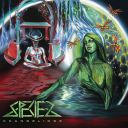
Seedów: 0
Komentarze: 0
Data dodania:
2025-10-02 19:45:40
Rozmiar: 285.23 MB
Peerów: 0
Dodał: Fallen_Angel
Opis
...SIŁA I PIĘKNO MUZYKI TKWIĄ W JEJ RÓŻNORODNOŚCI...
..::OPIS::.. White Mantis powstał w 2012 roku w Monachium, ale dopiero po sześciu latach działalności wydał swój debiut „Sacrifice Your Future”. Teraz, po kolejnych sześciu wiosnach wraca z drugą płytą, która tak jak poprzednia zawiera dziesięć numerów w thrash metalowym tonie. Bawarczycy grają wzorcowo i żwawo, zapierdalając paluszkami po gryfach jak ta lala, przy czym pałkarz siłą rzeczy ma pełne ręce roboty. Biczowanie tej czwórki muzyków jest o dziwo bliższe amerykańskiemu niż niemieckiemu, choć od czasu do czasu, gdzieś tam na „Arrows At The Sun” można dostrzec ostre zębiska „kreatorowej” zadzierżystości, która ugryźć potrafi, ale i pazur diabła „made in USA” podrapać też lubi. Panowie jednak stawiają bardziej na lekkość w stylu Bay Area, która częstuje szybkimi akordami, zakończonymi piskliwymi zawijasami, energicznym palm mutingiem oraz klasycznymi solówkami. Wokalista warczy, skrzeczy i zaciąga czystym głosem w zależności od sytuacji na pięciolinii, lecz mały trening by mu się przydał, bo chwilami jakby brakowało mu tchu. White Mantis nie poprzestaje jednak tylko na zwyczajowej naparzance, bo do swoich kompozycji wciska także sporą ilość awangardowych zagrywek, które co róż wypływają spomiędzy głównych tekstur, co kieruje thrash metal tej kapeli w delikatnie dysonansowe i nieco psychodeliczne rejony. Teutoni przechodzą wtedy z tradycyjnego riffowania w atonalne odpływy i spazmatycznie się wijące, nieoczywiste tremolo, budząc małe zdziwienie i ciekawość jak wyjdą z tej matni, ale udaje im się to bez trudu. Jednakże czasami dochodzą do ściany i ratują się nieoczekiwanym, i przypadkowym powrotem na poprzednie tory, uderzając również w lżejsze kostkowanie, zalatujące odrobinę hard rockiem, zasypując przy tym krótkimi, strzelistymi wokalizami i łatwiejszymi w odbiorze harmoniami. Thrash metal, który ani ziębi, ani grzeje, ale zagrany z jajem i naturalnością. Jeśli lubicie ten gatunek, to zwróćcie uwagę na White Mantis, bo to takie nie do końca oczywiste biczowanie, które jakieś tam ślady na plecach zostawia. shub niggurath WHITE MANTIS is a Thrash Metal band from Munich, Bavaria, Germany. What they play is very fast and furious, but also kept completely in control, avoiding chaos and mayhem along the way. It just falls a little short of calling them a Crossover kind of band. The band started life in 2012, and only since drummer Thomas Taube (2016) and bass player Jan Strobl (2018) joined has this direction been the one that was chosen for future endeavours. Since then, they released a debut album "Sacrifice Your Future" in 2019 and the EP "The Iron Curse" in 2022. Now, another three years after the latter one the band are back with "Arrows At The Sun". And yes, they are stilling following the yellow brick road they chose before. Oh, and yes, it is the first I have had the pleasure of listening to by WHITE MANTIS. And let's make it clear from the start, in the 46:55 minutes that the noises of "Arrows At The Sun" are dripping out and into your ears, you will be bombarded with nothing but fast paced Thrash Metal. If you are not ready for that, I would seriously advise you to not listen to the album in its entirety. You might not survive. For me personally, I am actually enjoying the onslaught that WHITE MANTIS is directing my way. I feel that the energy and the very lively vibes the band is throwing at me is making me feel young and (dare I say it) virile again, at least in my head. I'm glad my body didn't feel the need to act on it, because I fear that might have resulted in my back taken out or my heart giving in. Or, in the worst case scenario, both. And again, I have to say that "Arrows At The Sun" is one of those albums that will not give you new insights into Thrash Metal, that isn't trying to cut out new paths musically. WHITE MANTIS just takes what has already been done and writes their songs in a way that they can use the ideas that are laying around and translate them into what works for them. And even though at times you feel things will get chaotic, the band show that they have a grip on it and keep it all within the boundaries they have set for themselves. And yes, it works. I sincerely hope you feel the same, because the fact of the matter is that WHITE MANTIS has taken Teutonic Thrash Metal and injected new life into it on "Arrows At The Sun". MetalWim Van Grunsven ..::TRACK-LIST::.. 1. Nekrotornado 04:00 2. Arrows At The Sun 05:24 3. Pass The Torch 04:33 4. Divide And Kill 04:12 5. Atavistic Power 05:00 6. Over Your Pale Bones 03:36 7. Toxic Sniper 04:33 8. Roboticator 05:02 9. Reality Exists 05:27 10. Altar Of Technology 05:00 ..::OBSADA::.. Matthias Pletz - vocals, guitars Enrico Pertoso - guitars Jan Strobl - bass Thomas Taube - drums https://www.youtube.com/watch?v=tMf7kg39uag SEED 15:00-22:00. POLECAM!!! 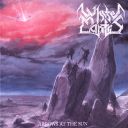
Seedów: 0
Komentarze: 0
Data dodania:
2025-09-21 09:02:52
Rozmiar: 112.09 MB
Peerów: 0
Dodał: Fallen_Angel
Opis
...SIŁA I PIĘKNO MUZYKI TKWIĄ W JEJ RÓŻNORODNOŚCI...
..::OPIS::.. White Mantis powstał w 2012 roku w Monachium, ale dopiero po sześciu latach działalności wydał swój debiut „Sacrifice Your Future”. Teraz, po kolejnych sześciu wiosnach wraca z drugą płytą, która tak jak poprzednia zawiera dziesięć numerów w thrash metalowym tonie. Bawarczycy grają wzorcowo i żwawo, zapierdalając paluszkami po gryfach jak ta lala, przy czym pałkarz siłą rzeczy ma pełne ręce roboty. Biczowanie tej czwórki muzyków jest o dziwo bliższe amerykańskiemu niż niemieckiemu, choć od czasu do czasu, gdzieś tam na „Arrows At The Sun” można dostrzec ostre zębiska „kreatorowej” zadzierżystości, która ugryźć potrafi, ale i pazur diabła „made in USA” podrapać też lubi. Panowie jednak stawiają bardziej na lekkość w stylu Bay Area, która częstuje szybkimi akordami, zakończonymi piskliwymi zawijasami, energicznym palm mutingiem oraz klasycznymi solówkami. Wokalista warczy, skrzeczy i zaciąga czystym głosem w zależności od sytuacji na pięciolinii, lecz mały trening by mu się przydał, bo chwilami jakby brakowało mu tchu. White Mantis nie poprzestaje jednak tylko na zwyczajowej naparzance, bo do swoich kompozycji wciska także sporą ilość awangardowych zagrywek, które co róż wypływają spomiędzy głównych tekstur, co kieruje thrash metal tej kapeli w delikatnie dysonansowe i nieco psychodeliczne rejony. Teutoni przechodzą wtedy z tradycyjnego riffowania w atonalne odpływy i spazmatycznie się wijące, nieoczywiste tremolo, budząc małe zdziwienie i ciekawość jak wyjdą z tej matni, ale udaje im się to bez trudu. Jednakże czasami dochodzą do ściany i ratują się nieoczekiwanym, i przypadkowym powrotem na poprzednie tory, uderzając również w lżejsze kostkowanie, zalatujące odrobinę hard rockiem, zasypując przy tym krótkimi, strzelistymi wokalizami i łatwiejszymi w odbiorze harmoniami. Thrash metal, który ani ziębi, ani grzeje, ale zagrany z jajem i naturalnością. Jeśli lubicie ten gatunek, to zwróćcie uwagę na White Mantis, bo to takie nie do końca oczywiste biczowanie, które jakieś tam ślady na plecach zostawia. shub niggurath WHITE MANTIS is a Thrash Metal band from Munich, Bavaria, Germany. What they play is very fast and furious, but also kept completely in control, avoiding chaos and mayhem along the way. It just falls a little short of calling them a Crossover kind of band. The band started life in 2012, and only since drummer Thomas Taube (2016) and bass player Jan Strobl (2018) joined has this direction been the one that was chosen for future endeavours. Since then, they released a debut album "Sacrifice Your Future" in 2019 and the EP "The Iron Curse" in 2022. Now, another three years after the latter one the band are back with "Arrows At The Sun". And yes, they are stilling following the yellow brick road they chose before. Oh, and yes, it is the first I have had the pleasure of listening to by WHITE MANTIS. And let's make it clear from the start, in the 46:55 minutes that the noises of "Arrows At The Sun" are dripping out and into your ears, you will be bombarded with nothing but fast paced Thrash Metal. If you are not ready for that, I would seriously advise you to not listen to the album in its entirety. You might not survive. For me personally, I am actually enjoying the onslaught that WHITE MANTIS is directing my way. I feel that the energy and the very lively vibes the band is throwing at me is making me feel young and (dare I say it) virile again, at least in my head. I'm glad my body didn't feel the need to act on it, because I fear that might have resulted in my back taken out or my heart giving in. Or, in the worst case scenario, both. And again, I have to say that "Arrows At The Sun" is one of those albums that will not give you new insights into Thrash Metal, that isn't trying to cut out new paths musically. WHITE MANTIS just takes what has already been done and writes their songs in a way that they can use the ideas that are laying around and translate them into what works for them. And even though at times you feel things will get chaotic, the band show that they have a grip on it and keep it all within the boundaries they have set for themselves. And yes, it works. I sincerely hope you feel the same, because the fact of the matter is that WHITE MANTIS has taken Teutonic Thrash Metal and injected new life into it on "Arrows At The Sun". MetalWim Van Grunsven ..::TRACK-LIST::.. 1. Nekrotornado 04:00 2. Arrows At The Sun 05:24 3. Pass The Torch 04:33 4. Divide And Kill 04:12 5. Atavistic Power 05:00 6. Over Your Pale Bones 03:36 7. Toxic Sniper 04:33 8. Roboticator 05:02 9. Reality Exists 05:27 10. Altar Of Technology 05:00 ..::OBSADA::.. Matthias Pletz - vocals, guitars Enrico Pertoso - guitars Jan Strobl - bass Thomas Taube - drums https://www.youtube.com/watch?v=tMf7kg39uag SEED 15:00-22:00. POLECAM!!! 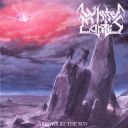
Seedów: 0
Komentarze: 0
Data dodania:
2025-09-21 08:58:34
Rozmiar: 369.46 MB
Peerów: 0
Dodał: Fallen_Angel
Opis
...SIŁA I PIĘKNO MUZYKI TKWIĄ W JEJ RÓŻNORODNOŚCI...
[Ponieważ wiem, iż bywają problemy z pobraniem moich wstawek bardzo proszę osoby, którym się to udało o udostępnianie innym użytkownikom] 6 lutego 1987 roku zespół nagrał trzy utwory na żywo w studiu BBC Maida Vale Studios w Londynie na potrzeby piątkowego programu Rock Show, wyemitowanego 27 lutego 1987 roku. ..::TRACK-LIST::.. CD 4 - BBC Radio 1 - Friday Rock Show Session 1987: 1. A Cautionary Tale 2. For Those Who Died 3. The 13th Disciple Recorded Maida Vale Studios, 6th February 1987, previously unreleased https://www.youtube.com/watch?v=IRSLx6qbfO0 SEED 15:00-22:00. POLECAM!!! 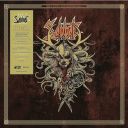
Seedów: 0
Komentarze: 0
Data dodania:
2025-09-18 18:08:29
Rozmiar: 44.69 MB
Peerów: 0
Dodał: Fallen_Angel
Opis
...SIŁA I PIĘKNO MUZYKI TKWIĄ W JEJ RÓŻNORODNOŚCI...
[Ponieważ wiem, iż bywają problemy z pobraniem moich wstawek bardzo proszę osoby, którym się to udało o udostępnianie innym użytkownikom] 6 lutego 1987 roku zespół nagrał trzy utwory na żywo w studiu BBC Maida Vale Studios w Londynie na potrzeby piątkowego programu Rock Show, wyemitowanego 27 lutego 1987 roku. ..::TRACK-LIST::.. CD 4 - BBC Radio 1 - Friday Rock Show Session 1987: 1. A Cautionary Tale 2. For Those Who Died 3. The 13th Disciple Recorded Maida Vale Studios, 6th February 1987, previously unreleased https://www.youtube.com/watch?v=IRSLx6qbfO0 SEED 15:00-22:00. POLECAM!!! 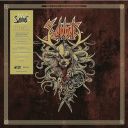
Seedów: 0
Komentarze: 0
Data dodania:
2025-09-18 18:05:30
Rozmiar: 143.07 MB
Peerów: 0
Dodał: Fallen_Angel
Opis
...SIŁA I PIĘKNO MUZYKI TKWIĄ W JEJ RÓŻNORODNOŚCI...
..::OPIS::.. Wydany w niewielkim nakładzie, limitowany, kolekcjonerski i trwający blisko 80 minut koncertowy CD zawierający klasyczny materiał o świetnej jakości dźwięku, zarejestrowany w Country Club w Los Angeles 6 (2 nagrania) i 7 (cała reszta) sierpnia 1985 roku, na legendarnej trasie promującej LP 'Hell Awaits'. Całość brzmi jak katalogowy, koncertowy album z wysokiej półki! ..::TRACK-LIST::.. 1. Hell Awaits 2. Aggressive Perfector 3. Face The Slayer 4. Final Command 5. Kill Again 6. Captor Of Sin 7. Fight Til Death 8. Hardening Of The Arteries 9. Necrophiliac 10. Crypts Of Eternity 11. Black Magic 12. Die By The Sword 13. Praise Of Death 14. Haunting The Chapel 15. The Antichrist 16. At Dawn They Sleep 17. Drum Solo 18. Show No Mercy 19. Evil Has No Boundaries 20. Chemical Warfare ..::OBSADA::.. Bass Guitar, Vocals - Tom Araya Drums - Dave Lombardo Guitar - Jeff Hanneman, Kerry King https://www.youtube.com/watch?v=SenkX2pV50A Ponieważ wiem, iż bywają problemy z pobraniem moich wstawek bardzo proszę osoby, którym się to udało o udostępnianie innym użytkownikom. Nie zachowujcie się jak pisowsko-konfederackie ścierwa... Przekaz POLSKI, nie lewacki... ***** *** i konfederacje!!! W 1989 roku dostaliśmy ogromną szansę wyjścia z ruskiej dupy... Nie dajmy się znowu tam wcisnąć!!! SEED 15:00-22:00. POLECAM!!! 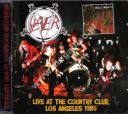
Seedów: 0
Komentarze: 0
Data dodania:
2025-09-14 14:36:25
Rozmiar: 188.36 MB
Peerów: 0
Dodał: Fallen_Angel
Opis
...SIŁA I PIĘKNO MUZYKI TKWIĄ W JEJ RÓŻNORODNOŚCI...
..::OPIS::.. Wydany w niewielkim nakładzie, limitowany, kolekcjonerski i trwający blisko 80 minut koncertowy CD zawierający klasyczny materiał o świetnej jakości dźwięku, zarejestrowany w Country Club w Los Angeles 6 (2 nagrania) i 7 (cała reszta) sierpnia 1985 roku, na legendarnej trasie promującej LP 'Hell Awaits'. Całość brzmi jak katalogowy, koncertowy album z wysokiej półki! ..::TRACK-LIST::.. 1. Hell Awaits 2. Aggressive Perfector 3. Face The Slayer 4. Final Command 5. Kill Again 6. Captor Of Sin 7. Fight Til Death 8. Hardening Of The Arteries 9. Necrophiliac 10. Crypts Of Eternity 11. Black Magic 12. Die By The Sword 13. Praise Of Death 14. Haunting The Chapel 15. The Antichrist 16. At Dawn They Sleep 17. Drum Solo 18. Show No Mercy 19. Evil Has No Boundaries 20. Chemical Warfare ..::OBSADA::.. Bass Guitar, Vocals - Tom Araya Drums - Dave Lombardo Guitar - Jeff Hanneman, Kerry King https://www.youtube.com/watch?v=SenkX2pV50A Ponieważ wiem, iż bywają problemy z pobraniem moich wstawek bardzo proszę osoby, którym się to udało o udostępnianie innym użytkownikom. Nie zachowujcie się jak pisowsko-konfederackie ścierwa... Przekaz POLSKI, nie lewacki... ***** *** i konfederacje!!! W 1989 roku dostaliśmy ogromną szansę wyjścia z ruskiej dupy... Nie dajmy się znowu tam wcisnąć!!! SEED 15:00-22:00. POLECAM!!! 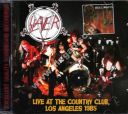
Seedów: 0
Komentarze: 0
Data dodania:
2025-09-14 14:32:21
Rozmiar: 558.69 MB
Peerów: 0
Dodał: Fallen_Angel
Opis
...SIŁA I PIĘKNO MUZYKI TKWIĄ W JEJ RÓŻNORODNOŚCI...
Rogi w górę! Intelektualnie stymulujący i jednocześnie fizycznie palący thrash metal! Lata 1677-1682, dwór króla Ludwika XIV. Temat - TRUCIZNY!!! Wyśmienity krążek!!! ..::TRACK-LIST::.. 1. Macabre Ceremony 04:27 2. Helene Jegado 04:33 3. Visitation Of A Lascivious Entity 08:01 4. Marquise de Brinvilliers 06:32 5. Phallanx Of Damnation 08:32 6. Raped Under The Stars 04:14 7. La Sorcière Du Marais 05:23 8. Hardrockers City 06:41 ..::OBSADA::.. Bass - S. Chainsaw-Maeströr Drums - Putrid Vön Rötten Guitar, Backing Vocals - Joey Demönömaniac Vocals, Guitar - Jey Deflagratör https://www.youtube.com/watch?v=89kUgIjKhQI Ponieważ wiem, iż bywają problemy z pobraniem moich wstawek bardzo proszę osoby, którym się to udało o udostępnianie innym użytkownikom. Nie zachowujcie się jak pisowsko-konfederackie ścierwa... W 1989 roku dostaliśmy ogromną szansę wyjścia z ruskiej dupy... Nie dajmy się znowu tam wcisnąć!!! SEED 15:00-22:00. POLECAM!!! 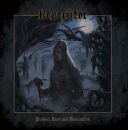
Seedów: 0
Komentarze: 0
Data dodania:
2025-08-30 16:43:59
Rozmiar: 113.09 MB
Peerów: 0
Dodał: Fallen_Angel
Opis
...SIŁA I PIĘKNO MUZYKI TKWIĄ W JEJ RÓŻNORODNOŚCI...
Rogi w górę! Intelektualnie stymulujący i jednocześnie fizycznie palący thrash metal! Lata 1677-1682, dwór króla Ludwika XIV. Temat - TRUCIZNY!!! Wyśmienity krążek!!! ..::TRACK-LIST::.. 1. Macabre Ceremony 04:27 2. Helene Jegado 04:33 3. Visitation Of A Lascivious Entity 08:01 4. Marquise de Brinvilliers 06:32 5. Phallanx Of Damnation 08:32 6. Raped Under The Stars 04:14 7. La Sorcière Du Marais 05:23 8. Hardrockers City 06:41 ..::OBSADA::.. Bass - S. Chainsaw-Maeströr Drums - Putrid Vön Rötten Guitar, Backing Vocals - Joey Demönömaniac Vocals, Guitar - Jey Deflagratör https://www.youtube.com/watch?v=89kUgIjKhQI Ponieważ wiem, iż bywają problemy z pobraniem moich wstawek bardzo proszę osoby, którym się to udało o udostępnianie innym użytkownikom. Nie zachowujcie się jak pisowsko-konfederackie ścierwa... W 1989 roku dostaliśmy ogromną szansę wyjścia z ruskiej dupy... Nie dajmy się znowu tam wcisnąć!!! SEED 15:00-22:00. POLECAM!!! 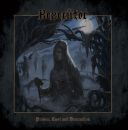
Seedów: 0
Komentarze: 0
Data dodania:
2025-08-30 16:40:35
Rozmiar: 381.68 MB
Peerów: 0
Dodał: Fallen_Angel
Opis
...SIŁA I PIĘKNO MUZYKI TKWIĄ W JEJ RÓŻNORODNOŚCI...
..::OPIS::.. Przez ponad 40 lat istnienia wypracowali swój charakterystyczny styl i niech nagrywają w nim jak najdłużej bo od dawna są jedyną ekipą z niemieckiej wielkiej trójki, która nagrywa na poziomie wartym uwagi. Ociebaton. Sodom był TYM zespołem, który w pełni wciągnął mnie na ścieżkę lewej ręki. Wcześniej były jakieś tam zerknięcia, ale dopiero łomot spuszczony mi na „Persecution Mania” w pełni otworzył mi oczy na glorię i chwałę metalu. I teraz, wielu latach przychodzi mi recenzować ich najnowsze dziecię. Czuję swoistą dumę, tym większą, że mogę Wam powiedzieć, że Tom i spółka nie mają powodów do wstydu. „The Arsonist” jest osiemnastym (faken, sporo ich) pełniakiem w dorobków Niemców. Po tylu latach grania można było mieć pewne obawy, że mogła trochę zejść z nich para. Na szczęście nie tak, by grali dziwactwa, jak Kreator, czy płaski metal dla każdego, jak Destruction, ale jednak. Wszak ostatnie albumy, te po świetnym „Epitome of Torture”, były po prostu dobre, ale miałem wrażenie, że czuć tam lekką zadyszkę. Tymczasem Sodom potajemnie zbierało siły, niczym Jurij Owsienko środki na wskrzeszenie Wiadomo Kogo, by przypierdolić pociskiem ciężkiego kalibru, ale tak, że nie ma co zbierać. Już sama okładka rzuca kolana. Namalowana z pietyzmem, godnym obrazów w galeriach sztuki i jawiąca się, jako hołd dla kultowego „Agent Orange” oraz „M 16”. A zawartość muzyczna albumu w pełni koresponduje z cieszącym oko obrazkiem. Klimatyczny kawałek tytułowy płynnie przechodzi w bezlitosny wpierdol, jakim jest „Battle of The Harvest Moon” i nawałnica pocisków nie ustaje aż do zamykającego album „Return to God in Parts„. Nie widzę za bardzo sensu w rozwodzeniu się nad każdym z trzynastu utworów, więc zbiorczo powiem, że każdy element dopieszczono tam maksymalnie. Riffy oraz solówki bezlitośnie dziurawią cywili, a dzieła zniszczenia dopełnia ciężki karabin maszynowy perkusji. Całość podlana jest tym dobrze znanym, lekko chrypiącym wokalem Toma, co łącznie przekłada się na idealny zbiór pieśni o krwi oraz przemocy. Co ciekawe, nie wiem czy to zabieg celowy, ale w niektórych kawałkach wyłapywałem echa ich poprzednich dokonań. A tu gdzieś riffy z „Nuclear Winter„, czy motyw z „In War And Pieces„. Nóżka chodzi dziarsko, pięść zaciska się aż paznokcie przecinają skórę, a twarz wykrzywia się w uśmiechu. Trudno mi tu wskazać na ten jeden najlepszy kawałek, ale w mojej ocenie wyróżniają się rewelacyjnie szalony „Trigger Discipline„, zamykający płytę „Return to God in Parts” oraz singiel honorujący byłego garowego Sodom, „Witchhunter„. Nie znajduję tu wad. Jeśli „The Arsonist” miałoby być ostatnią płytą w dorobku Sodom, to mogliby z dumą ogłosić, że zeszli ze sceny niepokonani. Pozycja obowiązkowa do słuchania oraz nabycia w tym roku. Bez dyskusji. Bart https://www.youtube.com/watch?v=HSGM6Ght8bc ..::TRACK-LIST::.. 1. The Arsonist 01:03 2. Battle Of Harvest Moon 04:12 3. Trigger Discipline 03:52 4. The Spirits That I Called 02:57 5. Witchhunter 03:13 6. Scavenger 04:01 7. Gun Without Groom 04:43 8. Taphephobia 03:42 9. Sane Insanity 04:03 10. A.W.T.F 03:57 11. Twilight Void 04:44 12. Obliteration Of The Aeons 03:53 13. Return To God In Parts 04:28 ..::OBSADA::.. Thomas Such - electric bass guitar, lead vocals Frank Gosdzik - electric guitar Yorck Segatz - electric guitar Toni Merkel - drums, production, mixing https://www.youtube.com/watch?v=f2HIR95GNs0 SEED 15:00-22:00. POLECAM!!! 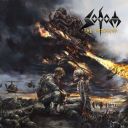
Seedów: 0
Komentarze: 0
Data dodania:
2025-08-22 19:05:10
Rozmiar: 117.99 MB
Peerów: 0
Dodał: Fallen_Angel
Opis
...SIŁA I PIĘKNO MUZYKI TKWIĄ W JEJ RÓŻNORODNOŚCI...
..::OPIS::.. Przez ponad 40 lat istnienia wypracowali swój charakterystyczny styl i niech nagrywają w nim jak najdłużej bo od dawna są jedyną ekipą z niemieckiej wielkiej trójki, która nagrywa na poziomie wartym uwagi. Ociebaton. Sodom był TYM zespołem, który w pełni wciągnął mnie na ścieżkę lewej ręki. Wcześniej były jakieś tam zerknięcia, ale dopiero łomot spuszczony mi na „Persecution Mania” w pełni otworzył mi oczy na glorię i chwałę metalu. I teraz, wielu latach przychodzi mi recenzować ich najnowsze dziecię. Czuję swoistą dumę, tym większą, że mogę Wam powiedzieć, że Tom i spółka nie mają powodów do wstydu. „The Arsonist” jest osiemnastym (faken, sporo ich) pełniakiem w dorobków Niemców. Po tylu latach grania można było mieć pewne obawy, że mogła trochę zejść z nich para. Na szczęście nie tak, by grali dziwactwa, jak Kreator, czy płaski metal dla każdego, jak Destruction, ale jednak. Wszak ostatnie albumy, te po świetnym „Epitome of Torture”, były po prostu dobre, ale miałem wrażenie, że czuć tam lekką zadyszkę. Tymczasem Sodom potajemnie zbierało siły, niczym Jurij Owsienko środki na wskrzeszenie Wiadomo Kogo, by przypierdolić pociskiem ciężkiego kalibru, ale tak, że nie ma co zbierać. Już sama okładka rzuca kolana. Namalowana z pietyzmem, godnym obrazów w galeriach sztuki i jawiąca się, jako hołd dla kultowego „Agent Orange” oraz „M 16”. A zawartość muzyczna albumu w pełni koresponduje z cieszącym oko obrazkiem. Klimatyczny kawałek tytułowy płynnie przechodzi w bezlitosny wpierdol, jakim jest „Battle of The Harvest Moon” i nawałnica pocisków nie ustaje aż do zamykającego album „Return to God in Parts„. Nie widzę za bardzo sensu w rozwodzeniu się nad każdym z trzynastu utworów, więc zbiorczo powiem, że każdy element dopieszczono tam maksymalnie. Riffy oraz solówki bezlitośnie dziurawią cywili, a dzieła zniszczenia dopełnia ciężki karabin maszynowy perkusji. Całość podlana jest tym dobrze znanym, lekko chrypiącym wokalem Toma, co łącznie przekłada się na idealny zbiór pieśni o krwi oraz przemocy. Co ciekawe, nie wiem czy to zabieg celowy, ale w niektórych kawałkach wyłapywałem echa ich poprzednich dokonań. A tu gdzieś riffy z „Nuclear Winter„, czy motyw z „In War And Pieces„. Nóżka chodzi dziarsko, pięść zaciska się aż paznokcie przecinają skórę, a twarz wykrzywia się w uśmiechu. Trudno mi tu wskazać na ten jeden najlepszy kawałek, ale w mojej ocenie wyróżniają się rewelacyjnie szalony „Trigger Discipline„, zamykający płytę „Return to God in Parts” oraz singiel honorujący byłego garowego Sodom, „Witchhunter„. Nie znajduję tu wad. Jeśli „The Arsonist” miałoby być ostatnią płytą w dorobku Sodom, to mogliby z dumą ogłosić, że zeszli ze sceny niepokonani. Pozycja obowiązkowa do słuchania oraz nabycia w tym roku. Bez dyskusji. Bart https://www.youtube.com/watch?v=HSGM6Ght8bc ..::TRACK-LIST::.. 1. The Arsonist 01:03 2. Battle Of Harvest Moon 04:12 3. Trigger Discipline 03:52 4. The Spirits That I Called 02:57 5. Witchhunter 03:13 6. Scavenger 04:01 7. Gun Without Groom 04:43 8. Taphephobia 03:42 9. Sane Insanity 04:03 10. A.W.T.F 03:57 11. Twilight Void 04:44 12. Obliteration Of The Aeons 03:53 13. Return To God In Parts 04:28 ..::OBSADA::.. Thomas Such - electric bass guitar, lead vocals Frank Gosdzik - electric guitar Yorck Segatz - electric guitar Toni Merkel - drums, production, mixing https://www.youtube.com/watch?v=f2HIR95GNs0 SEED 15:00-22:00. POLECAM!!! 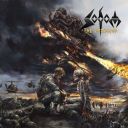
Seedów: 0
Komentarze: 0
Data dodania:
2025-08-22 19:02:20
Rozmiar: 372.91 MB
Peerów: 0
Dodał: Fallen_Angel
|
|||||||||||||
Żaden z plików nie znajduje się na serwerze. Torrenty są własnością użytkowników. Administrator serwisu nie może ponieść konsekwencji za to co użytkownicy wstawiają, lub za to co czynią na stronie. Nie możesz używać tego serwisu do rozpowszechniania lub ściągania materiałów do których nie masz odpowiednich praw lub licencji. Użytkownicy odpowiedzialni są za przestrzeganie tych zasad.
Copyright © 2025 Best-Torrents.com
Copyright © 2025 Best-Torrents.com